Samsung QN900D is undoubtedly the top model for 2024. This television is equipped with Mini LED technology, which provides excellent picture quality – deep blacks and high brightness make films and high-definition content look fantastic. During dynamic scenes in movies, colours and details were exceptionally well presented – especially after calibration. HDR also does not disappoint – bright elements have an excellent level of detail, and the colours are vibrant and natural. One of the strongest points of QN900D is motion smoothness. Supporting a refresh rate of 240 Hz at 4K resolution is rare on the market. Dynamic scenes in sports or games look incredibly smooth, without a trace of blurring. However, it should be added that only users of advanced PCs will fully utilise the capabilities of this feature. An input lag of 9 ms additionally ensures very responsive gameplay, which will certainly please gamers. Tizen operates smoothly and provides access to all popular applications, such as Netflix, YouTube, and Disney+. Moreover, SmartThings features and support for AirPlay allow easy connection of the television with other devices in the home. This is a great solution if you care about comfortably controlling your smart home. An additional perk is Ambient Mode – the television can blend into the décor of the living room by displaying decorative graphics. QN900D not only works well but also looks great. Slim bezels, a central stand, and the One Connect module that allows for cable concealment make the television look elegant. If aesthetics matter to us, it will be hard to find something better. As befits a flagship model, QN900D is simply expensive. Unfortunately, the lack of agreement between Samsung and Dolby Vision may still be a significant downside, especially when watching content on platforms that utilise this format. In the most demanding HDR scenes, it also happens that the contrast is not as perfect as we might expect. And what about 8K resolution? For now, it is difficult to find content that fully utilises it, unless we are enthusiasts for future technology. Samsung QN900D is certainly a television for those who are looking for a top-tier device and are willing to pay for it. However, if we are looking for similar quality at a considerably lower price, it is worth mentioning the equally good QN95D – it offers similar picture quality, without the 8K resolution, which is still more of a curiosity than a standard.
- Matching (Score)
- Our verdict
- TV appearance
- Where to buy
- Contrast and black detail
- HDR effect quality
- Factory color reproduction
- Color reproduction after calibration
- Smoothness of tonal transitions
- Image scaling and smoothness of tonal transitions
- Blur and motion smoothness
- Console compatibility and gaming features
- Input lag
- Compatibility with PC
- Viewing angles
- TV efficiency during daytime
- Details about the matrix
- TV features
- Apps
- Playing files from USB
- Sound
Samsung QN900D Neo QLED 8K vs Samsung QN900F
Direct compare
QN900D / Neo QLED / Excellence Line
NeoQLED 8K / QN900F

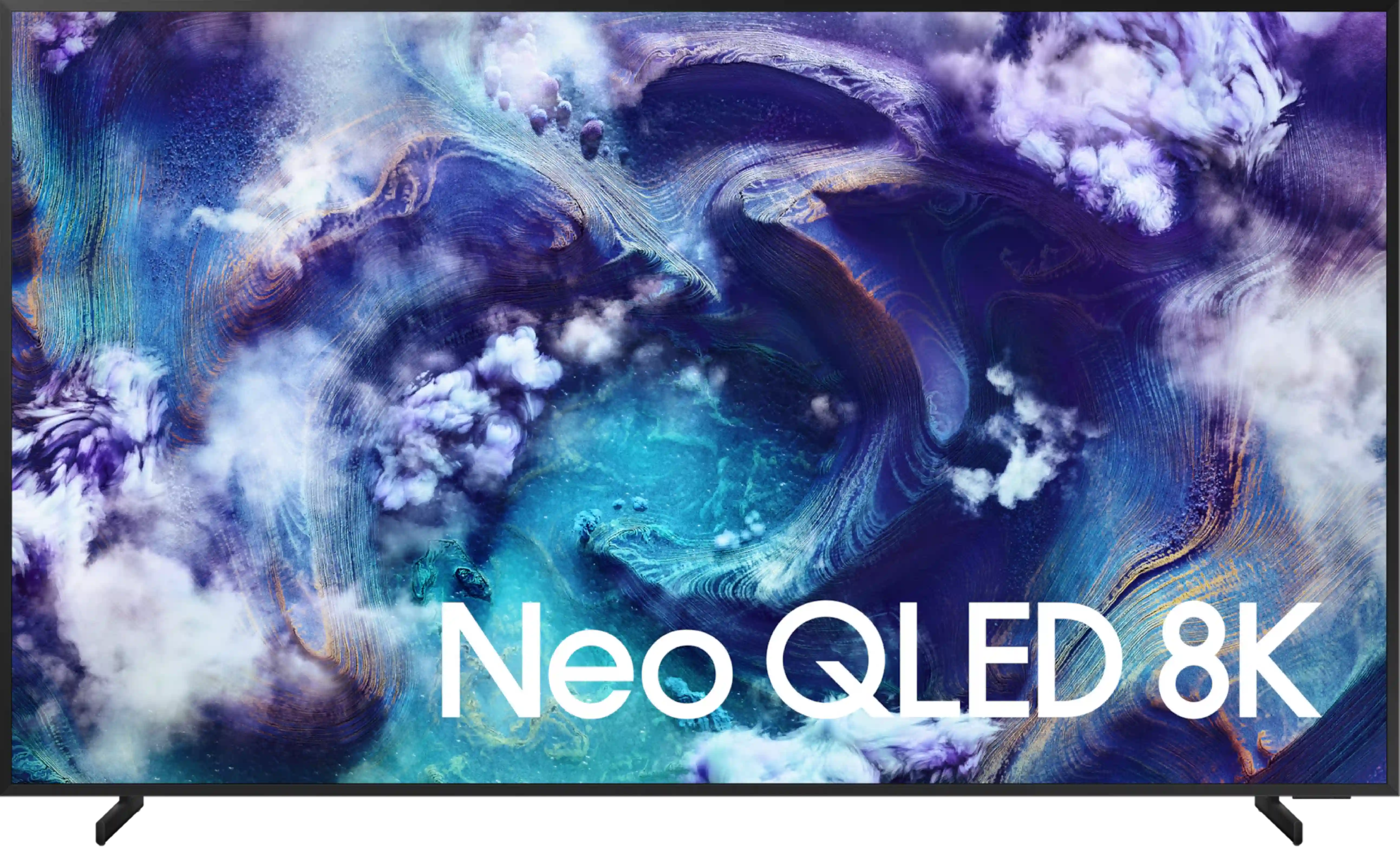
Panel type: LCD VA (wide viewing angle)
Resolution: 7680x4320
System: Tizen
Model year: 2024
Complete the survey to find out the result

Panel type: LCD VA
Resolution: 3840x2160
System: Tizen
Model year: 2025
Complete the survey to find out the result

Overall rating
7.5
7.7
Movies and series in UHD quality
7.6
7.3
Classic TV, YouTube
7.8
7.3
Sports broadcasts (TV and apps)
7.6
7.4
Gaming on console
9.0
8.8
TV as a computer monitor
8.0
8.4
Watching in bright light
5.0
7.1
Utility functions
7.4
7.2
Apps
8.7
8.7
Sound quality
7.4
8.2
Complete the survey to find out what fits your preferences
Advantages
Great contrast and blacks
High brightness - good HDR effect
The smoothest television in the world - 4K@240Hz
Excellent for gaming - low input lag, many features for gamers
Good digital processing - handles low-quality material well
Advanced operating system - Tizen
Great design - super slim, OneConnect, "floating" central stand
Good black
Very high brightness - up to 2000 nits in HDR
Great motion smoothness - 4k@165hz with low motion blur
Many features for gamers: VRR, ALLM, Game-bar, low input lag
Decent viewing angles
High usability efficiency in difficult lighting conditions: Matte screen + high brightness
Pleasant and very fast operating system: Tizen
Pleasant sound from built-in speakers
Disadvantages
Price
No Dolby Vision
The algorithms for local dimming could have been better refined.
There is no recording support from the built-in tuners.
No DTS:X (home cinema).
No HGiG*
*This is probably an update error and we are keeping track of the matter closely.
Our verdict
The Samsung QN900F is a television that can make a tremendous impression. The greatest strength of this model is the combination of Mini-LED backlighting with a matte panel. This not only gives us decent blacks but, above all, incredible brightness and excellent readability in all conditions. During the day, in a brightly lit living room, it is probably the best-performing television in this year's Samsung offerings. Gamers will also find plenty to enjoy here – despite being an 8K screen, it can operate at a frequency of up to 165 Hz in 4K. Additionally, it comes with a full HDMI 2.1 package, VRR and ALLM features, and low input lag, so the QN900F is suitable for both next-generation consoles and PCs. The design also deserves great praise – when hung on the wall, with a thick metal frame, this model resembles a more luxurious version of the iconic The Frame. Combined with the matte panel and Art Store mode, it can indeed be treated as equipment that not only plays and lights up but also decorates the living room.
However, not everything is perfect. Despite its impressive specifications, local dimming management does not always perform as well as one might hope. Given the large number of zones, Samsung could refine its control over blacks and HDR effects – it is evident that the potential is immense, but it does not always translate into top-tier picture quality. Moreover, it is important to remember that 8K resolution is still more of a novelty than a genuine necessity, and the price of this model makes it easy to start looking for cheaper alternatives, including within Samsung's own offerings. Despite these reservations, the QN900F is a television that can undoubtedly impress. Its strength lies not in the 8K itself but in how it presents the image, how it looks, and the enjoyment it brings during use.
TV appearance





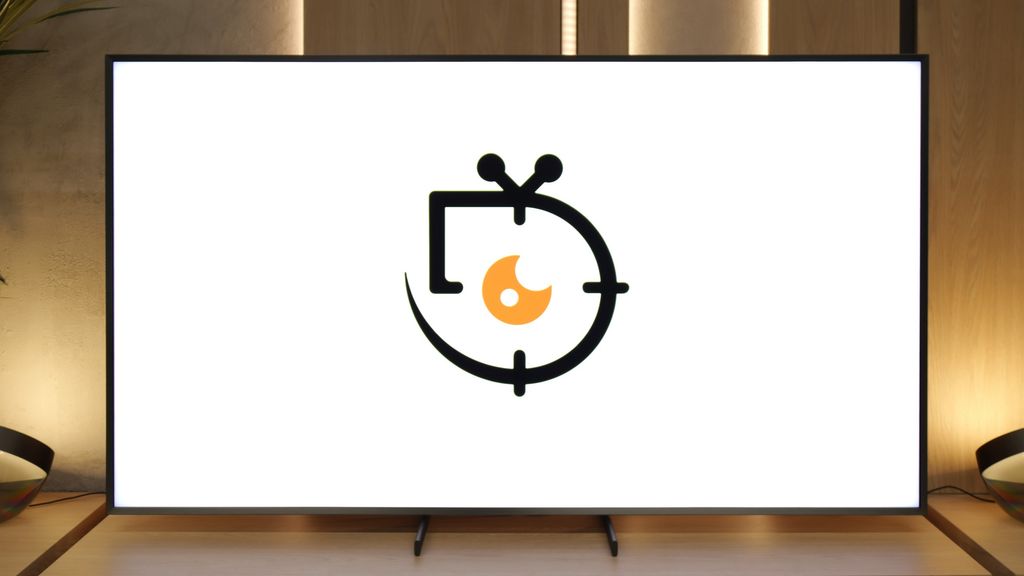
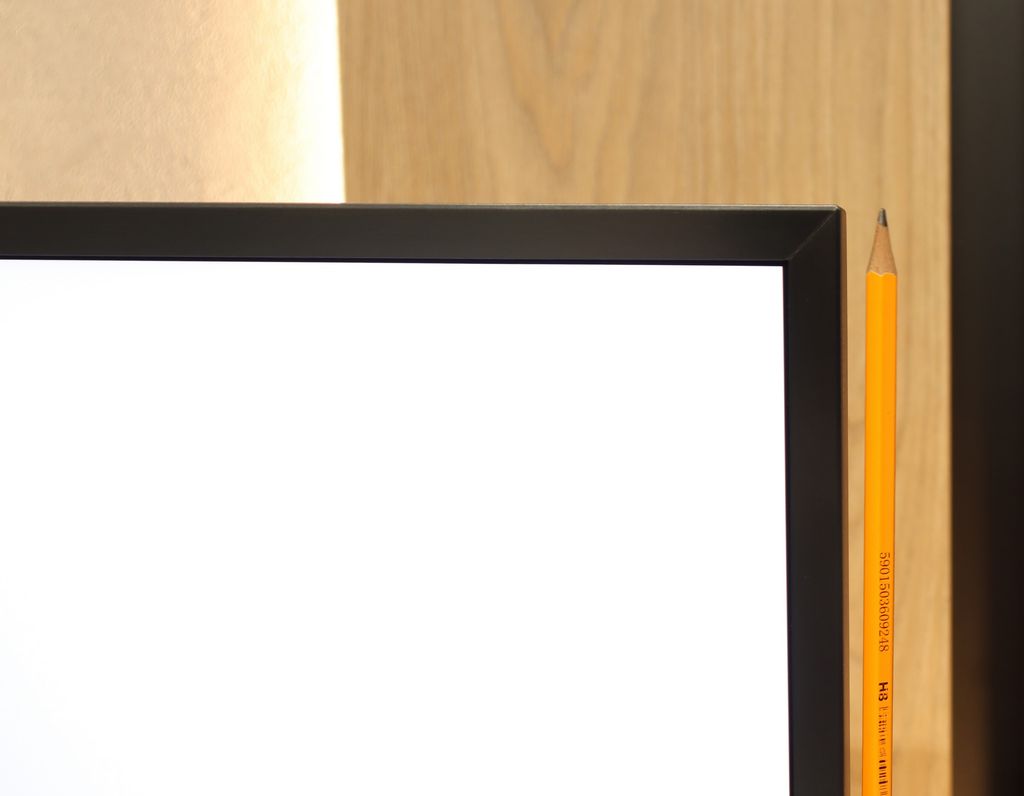
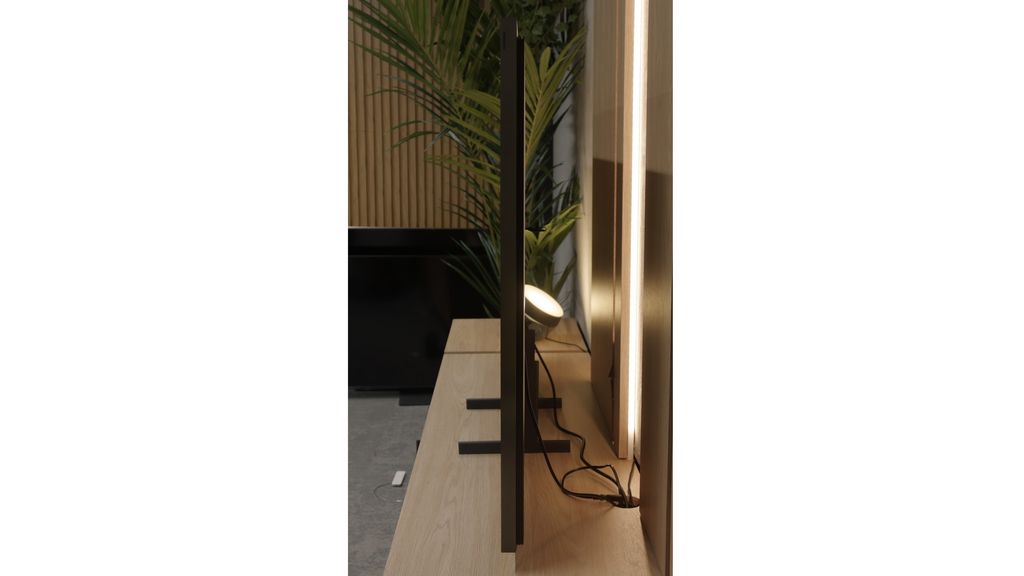
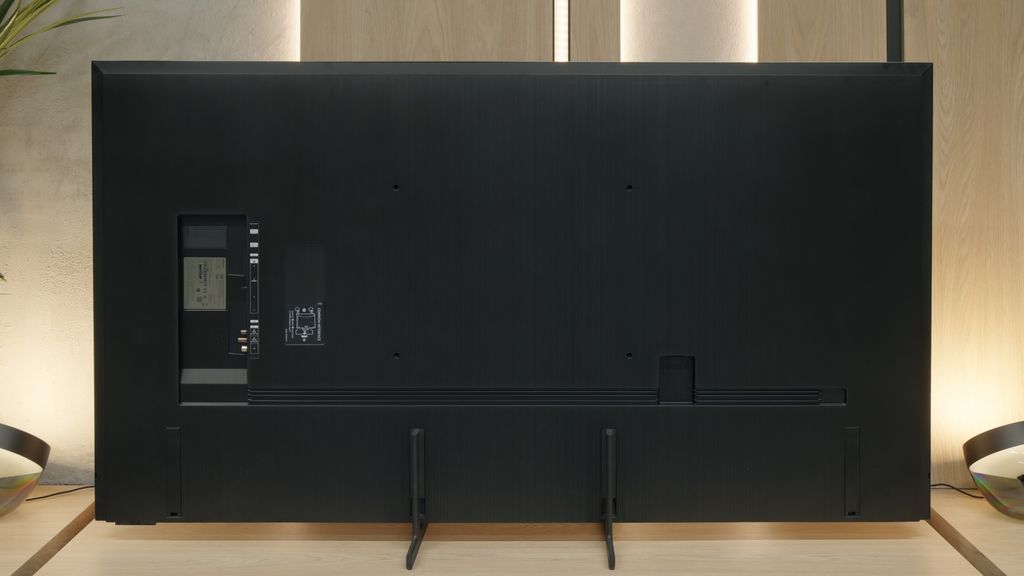
Contrast and black detail
8/10
7.2/10
Local dimming function: Yes, number of zones: 1344 (56 x 24)
Local dimming function: Yes, number of zones: 1056 (24 x 44)
Contrast:

Result
∞:1

Result
205,000:1

Result
89,000:1

Result
7,800:1

Result
4,000:1

Result
126,000:1

Result
41,650:1

Result
49,800:1

Result
5,350:1

Result
2,250:1
Halo effect and black detail visibility:

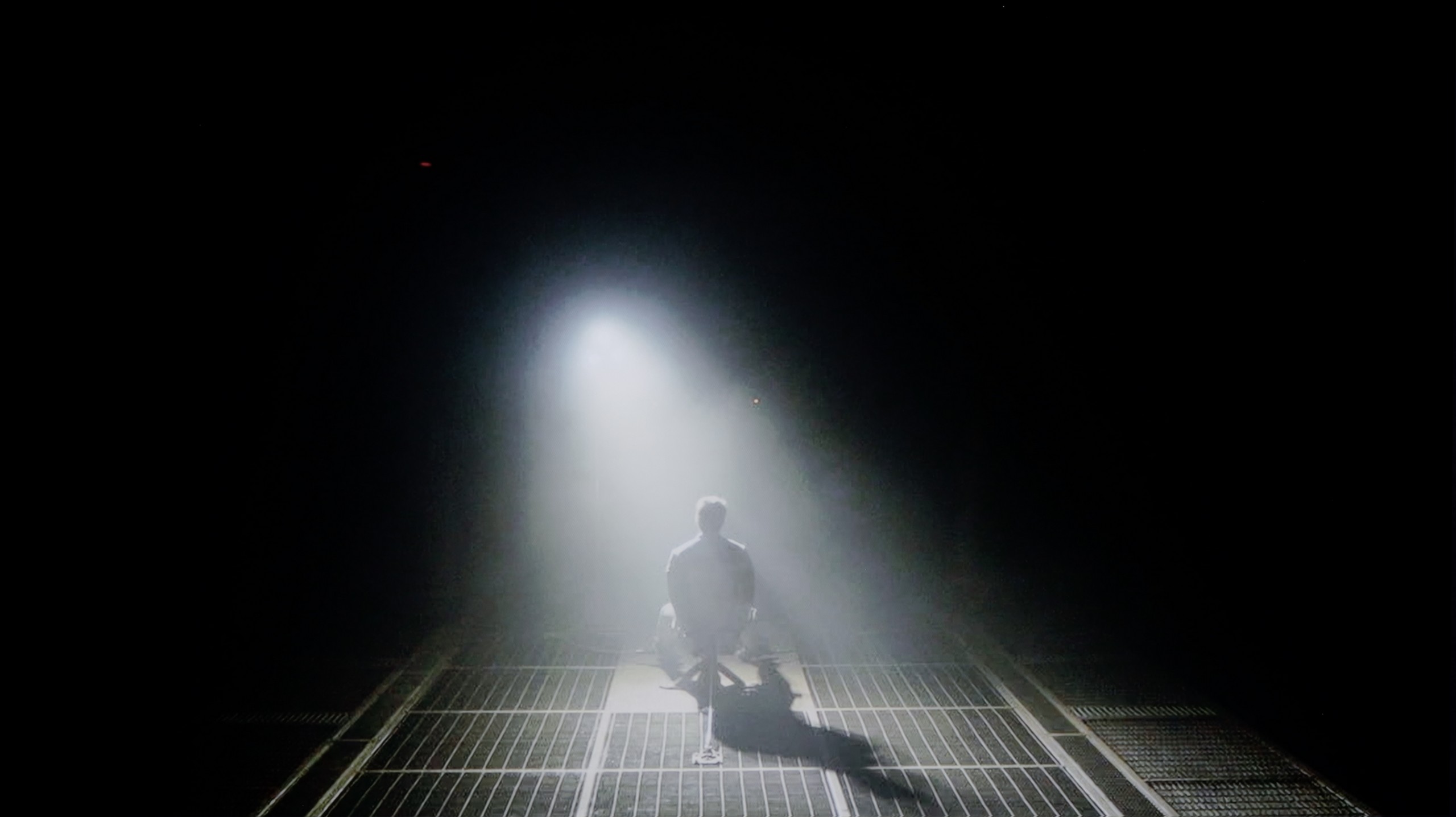
As befits the top model in the series, the Samsung QN900D television is equipped with a VA panel, which in the 65-inch version offers an impressive number of zones – as many as 1344. It is worth noting that larger sizes of this television have an even greater number of zones, which naturally translates to better contrast. During tests in scenes from the film "Oblivion," the QN900D performs excellently. Contrast values close to infinity are truly impressive, allowing for bold comparisons between this television and OLEDs. Unfortunately, like every LCD television, this model also has its limitations. In the case of very small elements, certain inaccuracies are visible, such as halo effects (e.g., in the film "Sicario 2") and occasionally significant dimming of the screen (e.g., in scenes from the film "Gravity"). Despite these imperfections, the Samsung QN900D is undoubtedly one of the best LED televisions available on the market, capable of generating very high contrast.
The QN900F is equipped with a VA panel, which in itself provides decent contrast, but that is not where its greatest strength lies. This is a mini-LED television, so we are dealing with local dimming technology, allowing specific zones of the image to be darkened. In the 65-inch variant, we counted as many as 1056 zones, which translated into really solid results. In the best possible scenario, the QN900F achieved a contrast ratio exceeding 100,000:1, which is absolutely impressive – at that moment, the black level was truly reminiscent of OLED. However, it must be remembered that it is not an OLED and has its classic mini-LED quirks. Since the television must decide which zone to brighten and which to darken, there are moments when the algorithm is not entirely sure what to do. This was the case, for example, in one of our test scenes, where the QN900F chose brightness over black depth, resulting in a significant drop in contrast to a level of 2300:1. Yes, the elements on screen were brighter, but around them, a characteristic glow (halo effect) was visible – the black then resembled a navy blue more. Generally, the black level on the QN900F is really very good – but not so good as to compare it with televisions featuring an organic panel.
HDR effect quality
6.6/10
6.4/10
Luminance measurements in HDR:

Result
1447 nit

Result
665 nit

Result
907 nit

Result
432 nit

Result
793 nit

Result
1200 nit

Result
609 nit

Result
850 nit

Result
214 nit

Result
1415 nit
Scene from the movie “Pan” (about 2800 nits)


Scene from the movie “Billy Lynn” (about 1100 nits)


Static HDR10


Dynamic: HDR10+
Dynamic: HDR10+


HDR luminance chart:
Samsung QN900F
Luminancja HDR
Luminance of RGB colors
Samsung QN900D Neo QLED 8K
Luminancja HDR
Luminance of RGB colors
The Samsung QN900D television demonstrates its high capabilities in light production in synthetic tests without any issues – 1400 nits is truly an impressive figure. It also showcased these capabilities in the first scene from the film "Life of Pi," where we see a brilliant burst of the rising sun. However, due to problems with the dimming algorithm, some issues can be noticed here. In the test scenes from "Sicario 2" and the second scene from "Life of Pi," these values are no longer as high and amount to around 500-600 nits. While this may not be the worst result among Mini LED televisions, one could expect more given the price of the television. Nonetheless, the television deserves praise for covering a wide colour gamut of DCP P3 at 96%. Although there are technologies offering higher values, this result is still satisfactory.
QN900F is truly a bright television – it can generate nearly 2000 nits, a figure that remains unattainable for most models available on the market. But the mere ability to achieve such brightness is not everything – it also matters whether the television can make good use of it. And here, it is not always perfect. Our tests on cinematic test patterns showed that in scenes such as those from Life of Pi or The Meg, the QN900F can truly shine – literally and metaphorically. In such moments, its greatest advantage, which is brightness, makes a huge impression. However, in more demanding scenes, challenges arise – similar to when assessing contrast. When smaller, bright elements appear on screen, the television often struggles with the decision: should it highlight them at the expense of black levels, or perhaps maintain deep blacks while toning down brightness. The result is situations where, for example, in the film Sicario 2, brightness dropped to just 200 nits, making details barely visible. Dimming algorithms could definitely be better for a television of this class.
Factory color reproduction
6.6/10
5/10


Factory Mode
After calibration


Factory Mode
After calibration
The television QN900D offers a Filmmaker mode that has been created with the intention of watching films in the most natural way possible, however, this mode is not without certain flaws. For HD content, the white balance shows a dominance of red and blue colours, causing the image to take on pink hues. In contrast, for 4K HDR content, the situation is the opposite – the decrease in blue and red levels warms up scenes and shifts colours towards yellow tones. This is confirmed by Color Checker tests, which clearly show that colour samples are veering in this direction.
As for brightness and the associated contrast, the gamma is significantly impaired. The biggest issue is a noticeable jump at the beginning of the graph, which indicates that dark details are excessively brightened, resulting in a loss of depth in the darkest areas of the image – this is due to local dimming. For 4K HDR materials, the EOTF curve looks quite good, however, it remains below the reference level, impacting the overall dynamics of the image.
Testing the QN900F in Filmmaker mode, the characteristic features of the image were quickly noticeable, even though this mode is designed to reflect the director’s vision. The white balance was not perfect – the television displayed distinct deficiencies in the blue colour. This made the entire scene take on a warmer tone, as if someone had applied a subtle filter in shades of yellow and orange. In films where bright shots dominate – for example, scenes in the snow or in strong daylight – this gave the impression of slight warmth that did not always convey the director's intent. The second noticeable element was the management of brightness. The QN900F could sometimes brighten the image more than necessary. It looked as though the exposure had been slightly 'pulled up', causing the scene to lose its naturalness. Shadows were sometimes too shallow, and the contrast slightly weakened. These are not disqualifying errors, but for a television in this price range, it is evident that Filmmaker mode has not been perfected one hundred percent. This is particularly noticeable when we compare its image with what was seen after the screen calibration.
Color reproduction after calibration
8/10
8.7/10




After calibration, the Filmmaker mode can indeed be called worthy of its name. The white balance for both HD and 4K HDR content has been significantly improved, making colours more natural and consistent. The image has gained in realism, and pink hues in HD content have been effectively eliminated, as has the yellowish glow in 4K HDR content. Thanks to calibration, the television now offers much better colour reproduction, positively affecting the viewing experience.
As for brightness, the situation with gamma is now quite the opposite – at the beginning of the graph, there is a noticeable drop, making the darkest details harder to discern. The EOTF curve for 4K HDR content has remained largely unchanged and is still below the reference level, meaning the television still struggles to maintain proper brightness. This is related to the aggressive dimming algorithm that affects the overall brightness of the image. You can see how the television fights to maintain high brightness or perfect black.
Despite the limitations associated with local dimming, the Samsung QN900D has improved colour reproduction quality, as confirmed by the Color Checker test results – the colour samples are now much closer to the targets, making the image more natural and pleasing to the eye.
After calibration, we managed to eliminate errors in white balance and adjust them to a level that can be considered acceptable. It is not perfect, but it is definitely better than the factory settings. Most colour errors now lie within the deltaE 2–3 range, so in practice, they should not be noticeable during everyday viewing. However, the most significant improvement is evident in how the television manages brightness in SDR content. Shadows and details are no longer flattened, which gives the image depth and naturalness. As for 4K HDR material – colours themselves are no longer an issue, but some imperfections of Mini-LED technology can still be observed. The QN900F tends to dim the smallest bright elements too much, causing them to sometimes disappear from view. However, it should be noted that this is a much better solution than boosting the entire screen, which would spoil the contrast. This is more of a characteristic of this technology than a typical flaw, but it is worth keeping in mind. The effects of calibration are truly very good.
Smoothness of tonal transitions
8/10
8.3/10





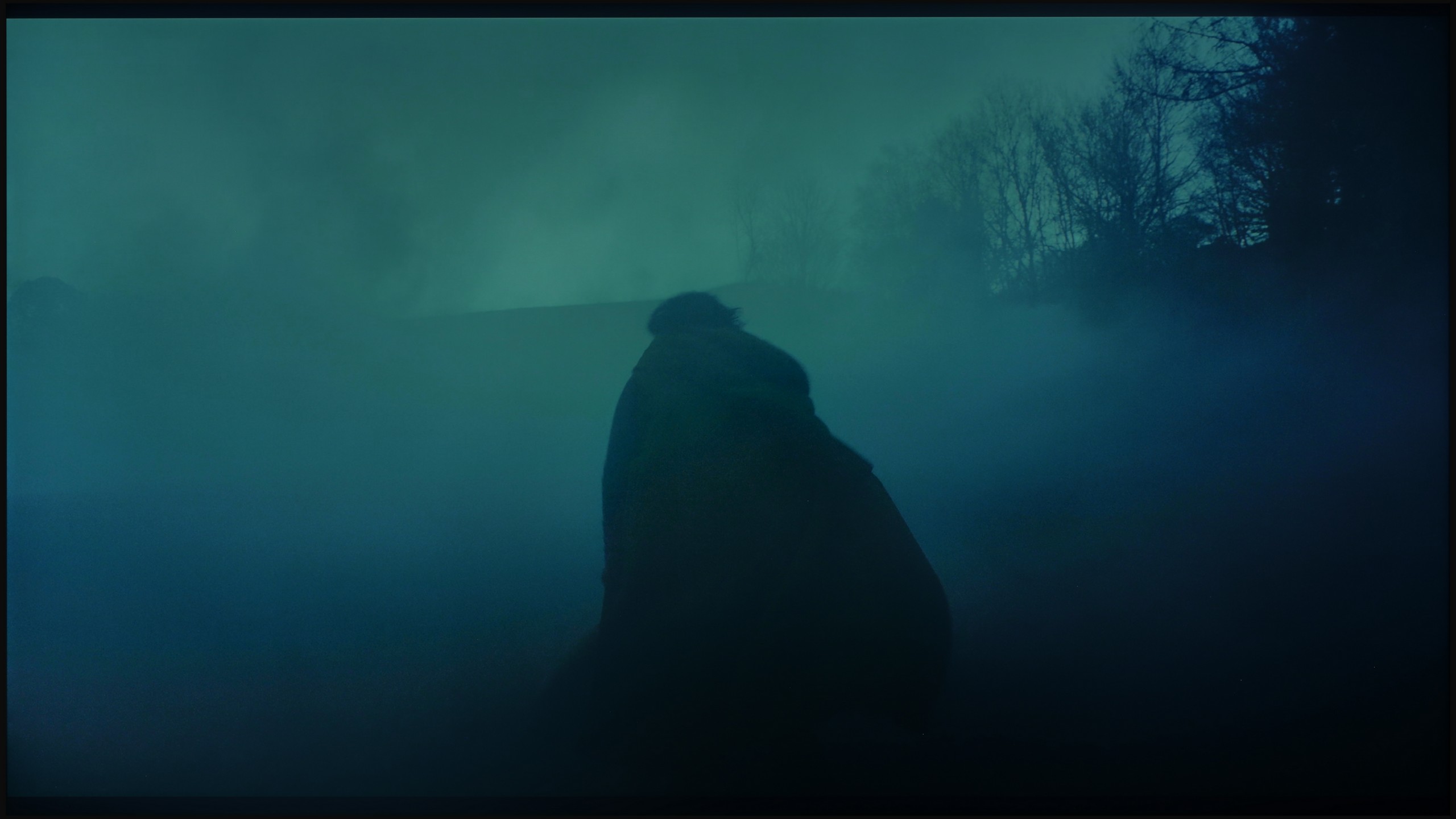






The Samsung QN900D television handles tonal transitions smoothly, deserving a rating of 8/10. Colour gradation is generally good, although not perfect – in darker scenes, certain imperfections may be noticeable to more demanding users. Despite these minor flaws, the effect should satisfy most viewers, providing natural transitions.
QN900F performs really very well in terms of gradation. The tonal transitions are smooth and natural, without clear contours or banding. Interestingly, it is one of the few televisions that handles dark transitions better than light ones – we only noticed slight imperfections in heavily brightened scenes like that from the film Kingsman. In most cases, the picture simply looks very good and we have nothing to complain about.
Image scaling and smoothness of tonal transitions
7/10
7.5/10
Smooth transition function

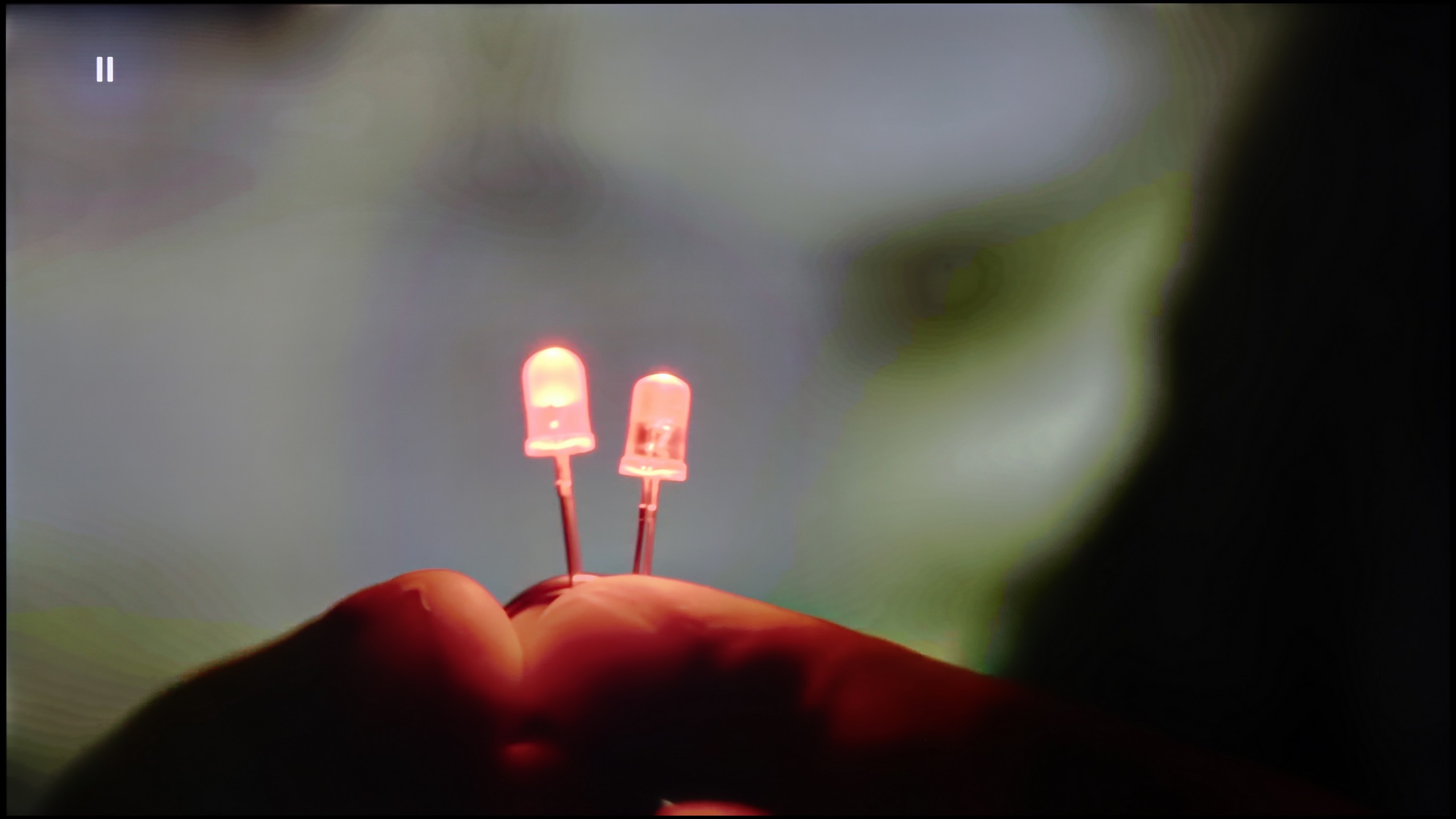
Image without overscan on the SD signal


The fluidity of tonal transitions in lower-quality materials is impressive – the Noise Reduction feature effectively smooths tonal transitions while eliminating film grain. Although the removal of grain is not always desirable, the overall final effect looks very aesthetically pleasing, particularly for those who prefer a cleaner image.
When it comes to upscaling, or image scaling, QN900D shows the enormous potential of the new processor with AI technology. Images and materials in lower resolution are upscaled while preserving many details – for example, a photo of a model looks fantastic, free of unnecessary jagged edges, and the branches in the background are not overly jagged.
If we want to eliminate jarring tonal transitions that can be irritating, for example, while watching YouTube, we can use a feature called noise reduction. It works really effectively – it removes issues with colour blending when we set it to Standard level. However, as with most Samsung televisions, this does involve some compromises. Although we did not notice this feature significantly affecting the structure of objects in the image, it unfortunately reacts quite aggressively to film grain. Most people will likely appreciate this effect – the noise is simply removed – but if someone is looking for an image as close as possible to reference settings, we definitely recommend turning this option off.
When it comes to scaling, or dealing with very low-quality content, the QN900F performs really well. On the test card with the model, the image appeared clear, with only slight aliasing that shouldn't bother most viewers. However, it is worth mentioning one issue – the television sometimes has problems with so-called overscan, which can cause older content to be slightly cropped. This might manifest, for example, in subtitles disappearing from the bottom of the screen.
Blur and motion smoothness
7.4/10
7.8/10

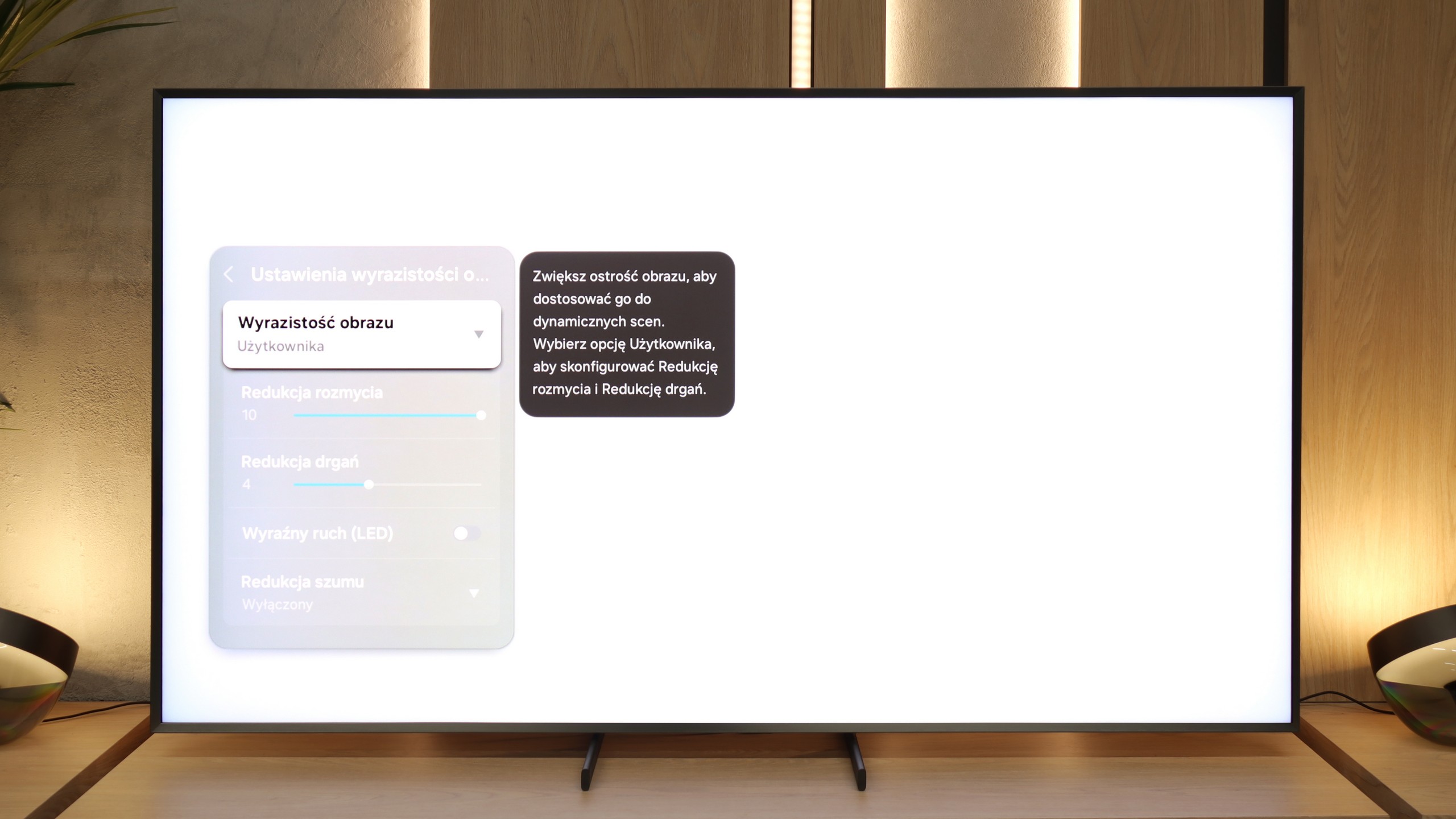
Blur (native resolution, maximum refresh rate):




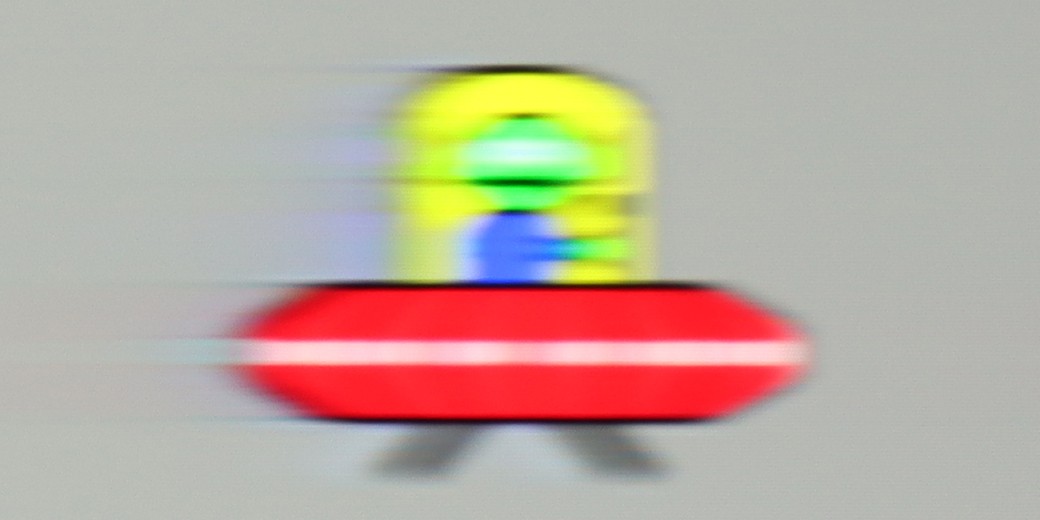
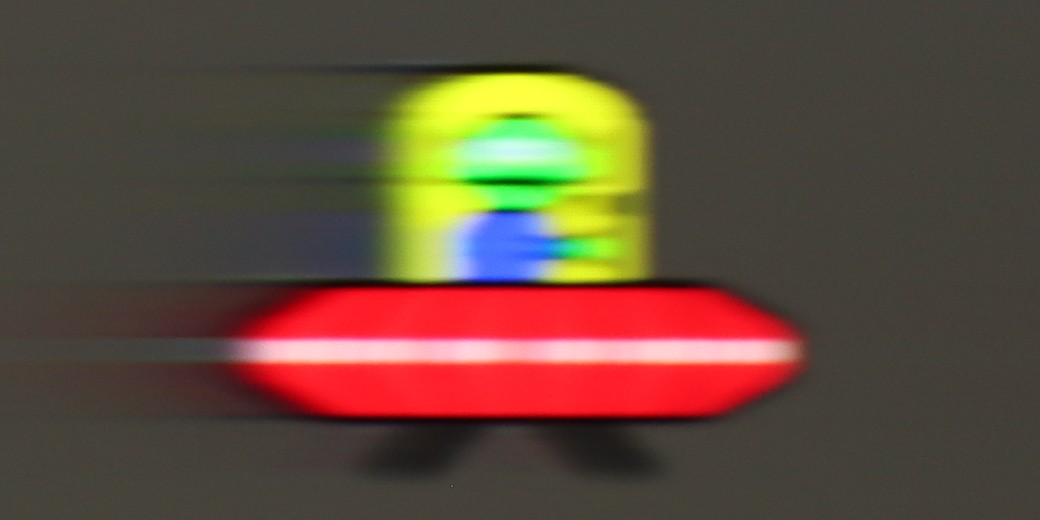
Blur (BFI function enabled):
Image flickers in this mode
Image flickers in this mode
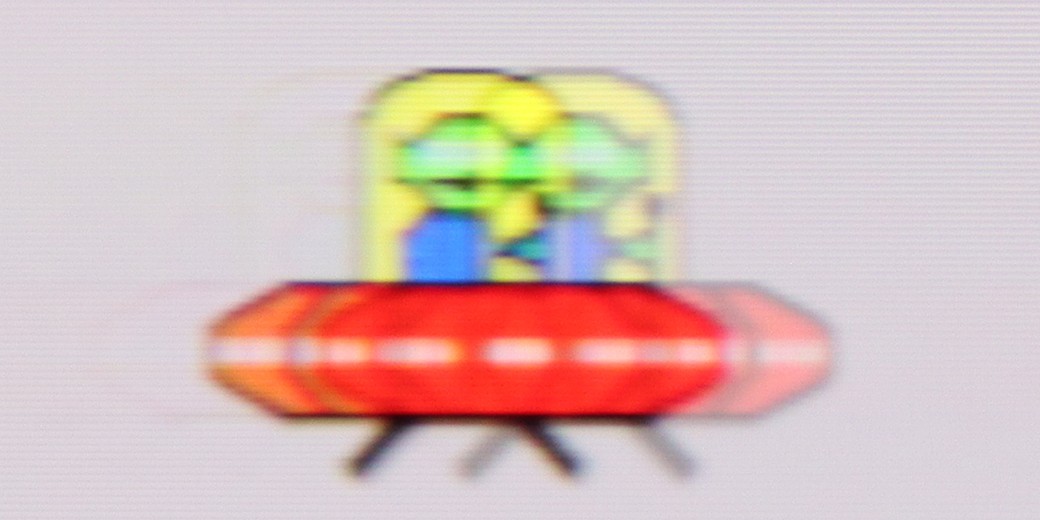


Smużenie (2160p 240Hz):



Smużenie (4K@165Hz):
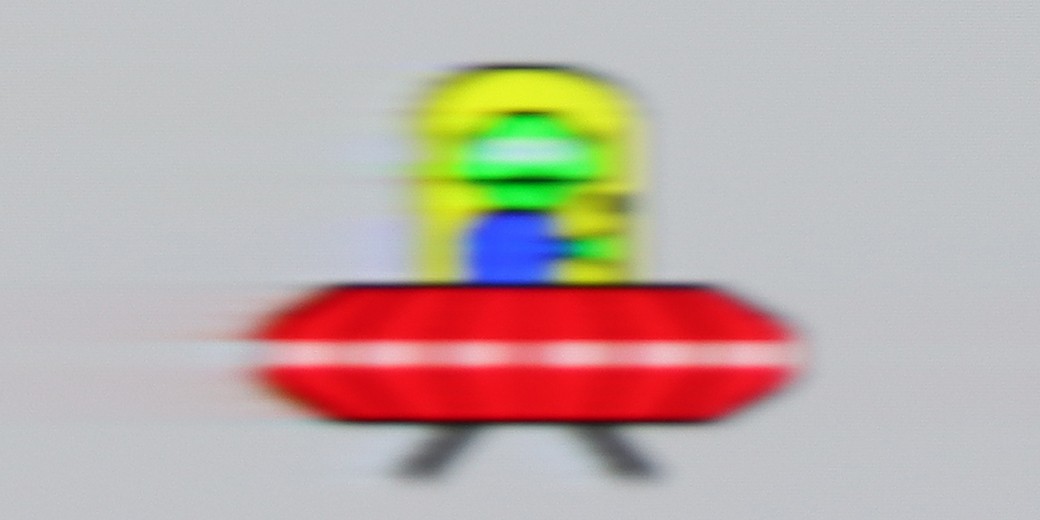
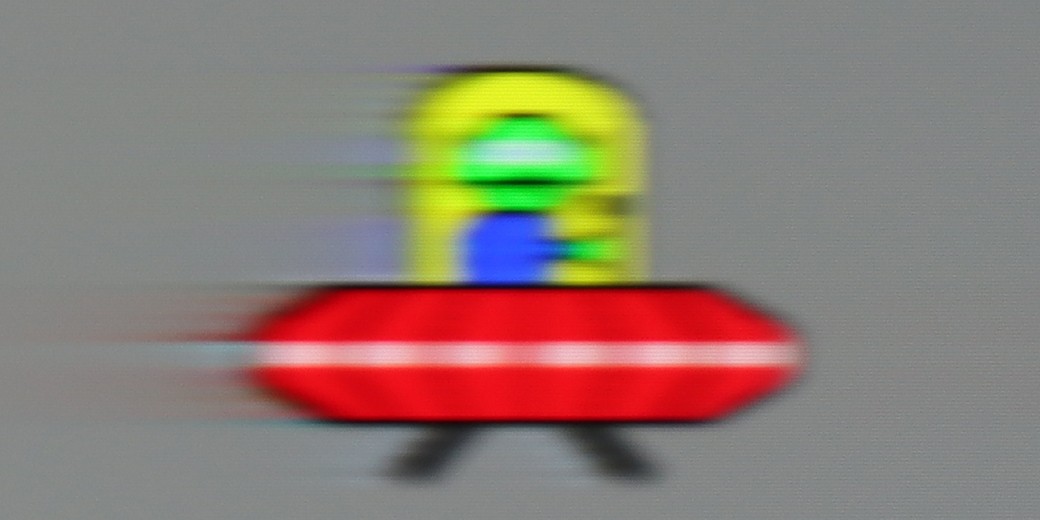
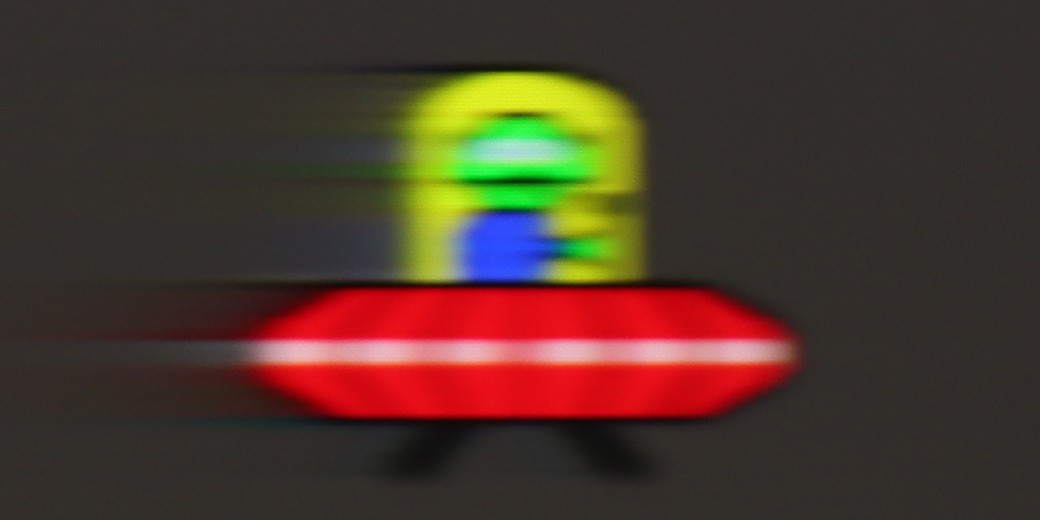
Samsung QN900D is currently the fastest television in the world – literally. A refresh rate of 240 Hz in 4K resolution is an incredible value that PC gamers will surely appreciate. As for cinema fans, they will not be disappointed either – Samsung offers a 10-step clarity scale in the picture settings, allowing for image adjustments. We can choose whether the television should provide a smoother, theatrical effect at the highest settings, or a more cinematic experience, with visible frames, at the lowest settings.
There really is nothing to complain about here – the QN900F looks very good in terms of motion. With a 165 Hz panel in 4K, it can confidently be said that this television is suitable for both watching sports and gaming. The motion enhancer plays a key role here. It works brilliantly – not only during sports broadcasts, where it can eliminate blurring and image shaking, but also in games, where the animation becomes clearer and smoother. And of course, if someone likes to experiment with films – they also have that option. At lower settings, a slight graininess and cinematic character can be seen, while at higher settings, it takes on a soap opera effect. In other words, everyone can adjust the picture to their preferences, and the television has the power to handle it.
Console compatibility and gaming features
9.5/10
8.2/10
- ALLM
- VRR
- VRR range48 - 240Hz48 - 165Hz
- Dolby Vision Game Mode
- Correct implementation of HGIG
- 1080p@120Hz
- 1440p@120Hz
- 4K@120Hz
- Game bar

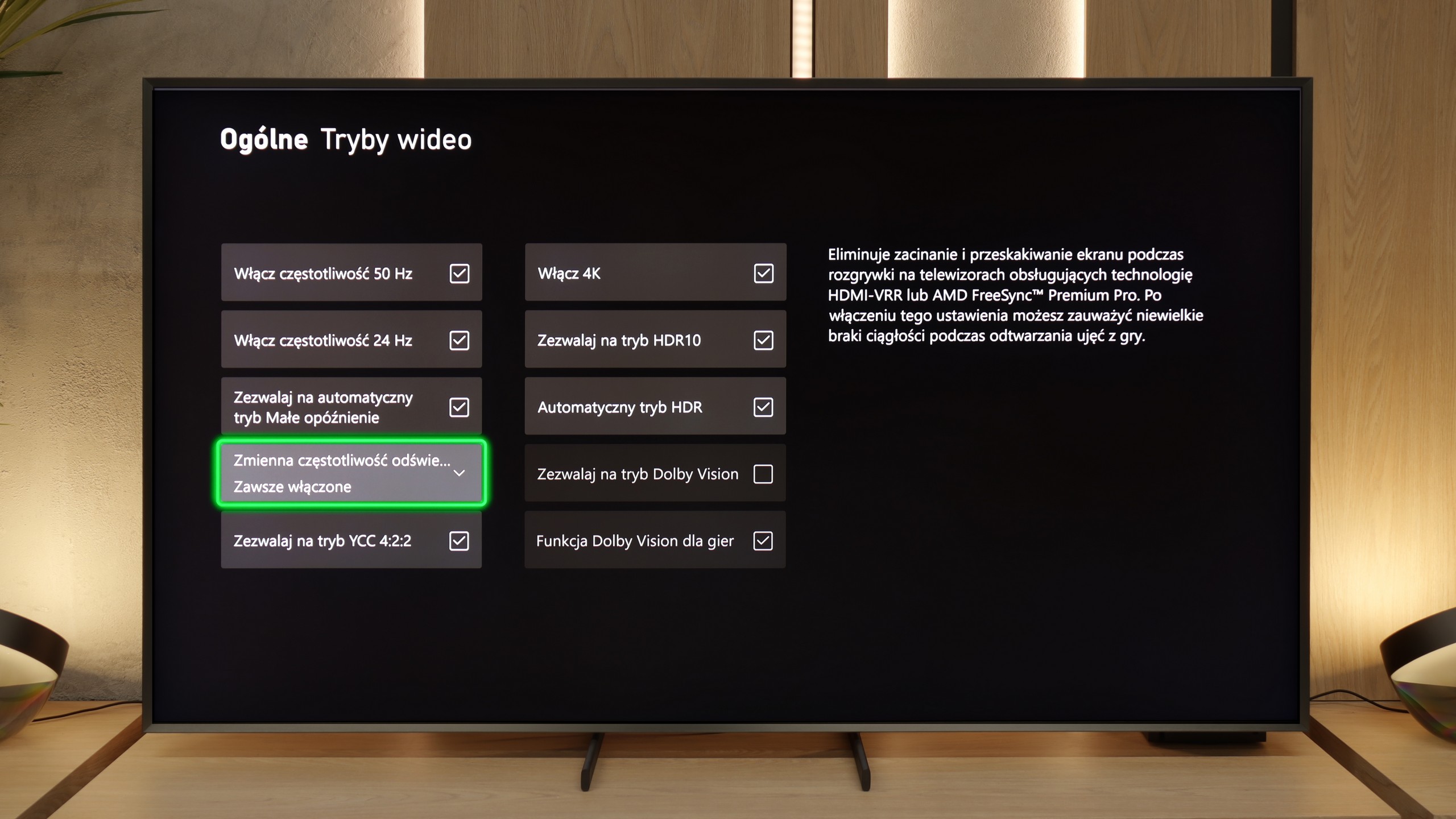

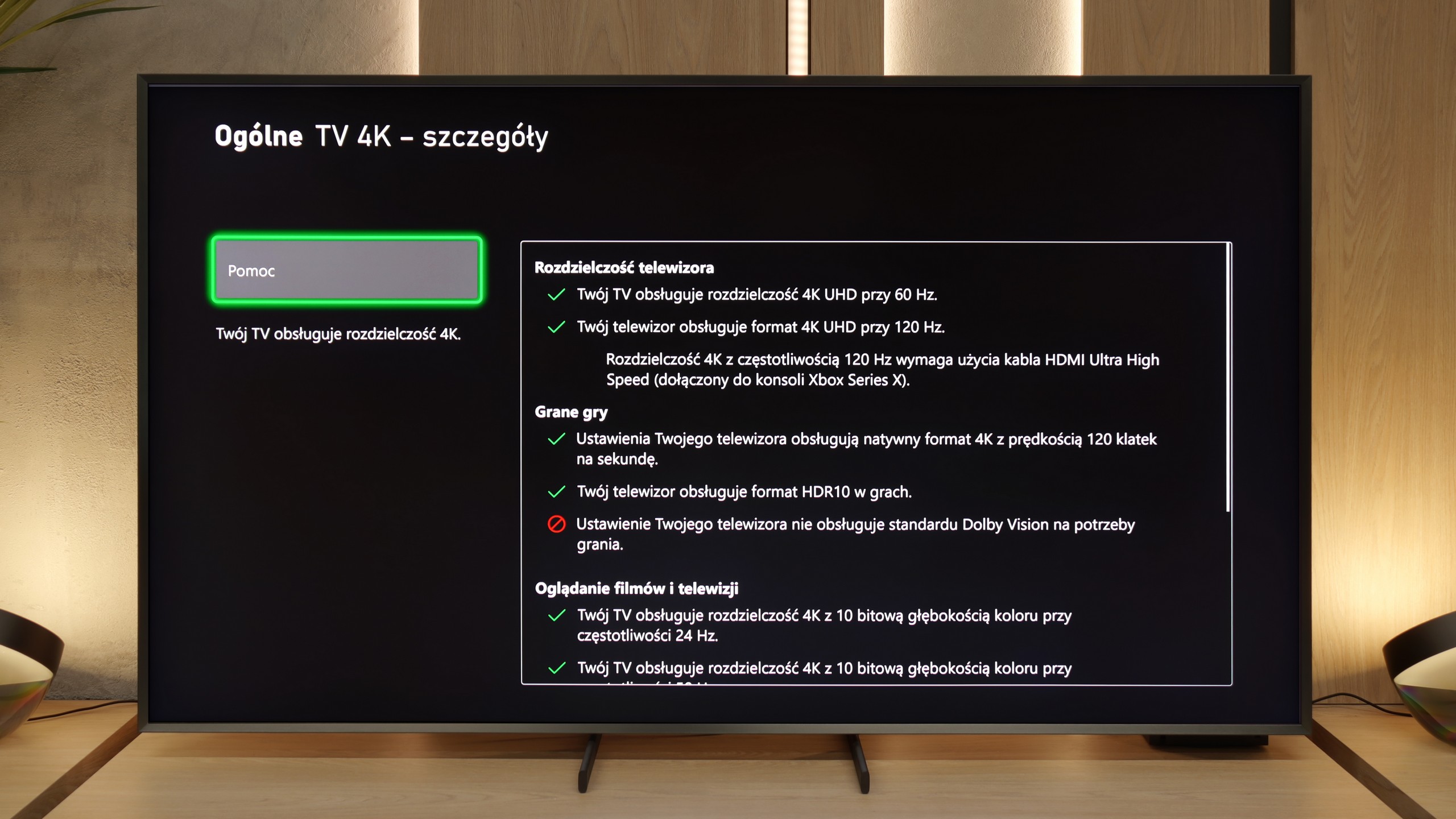

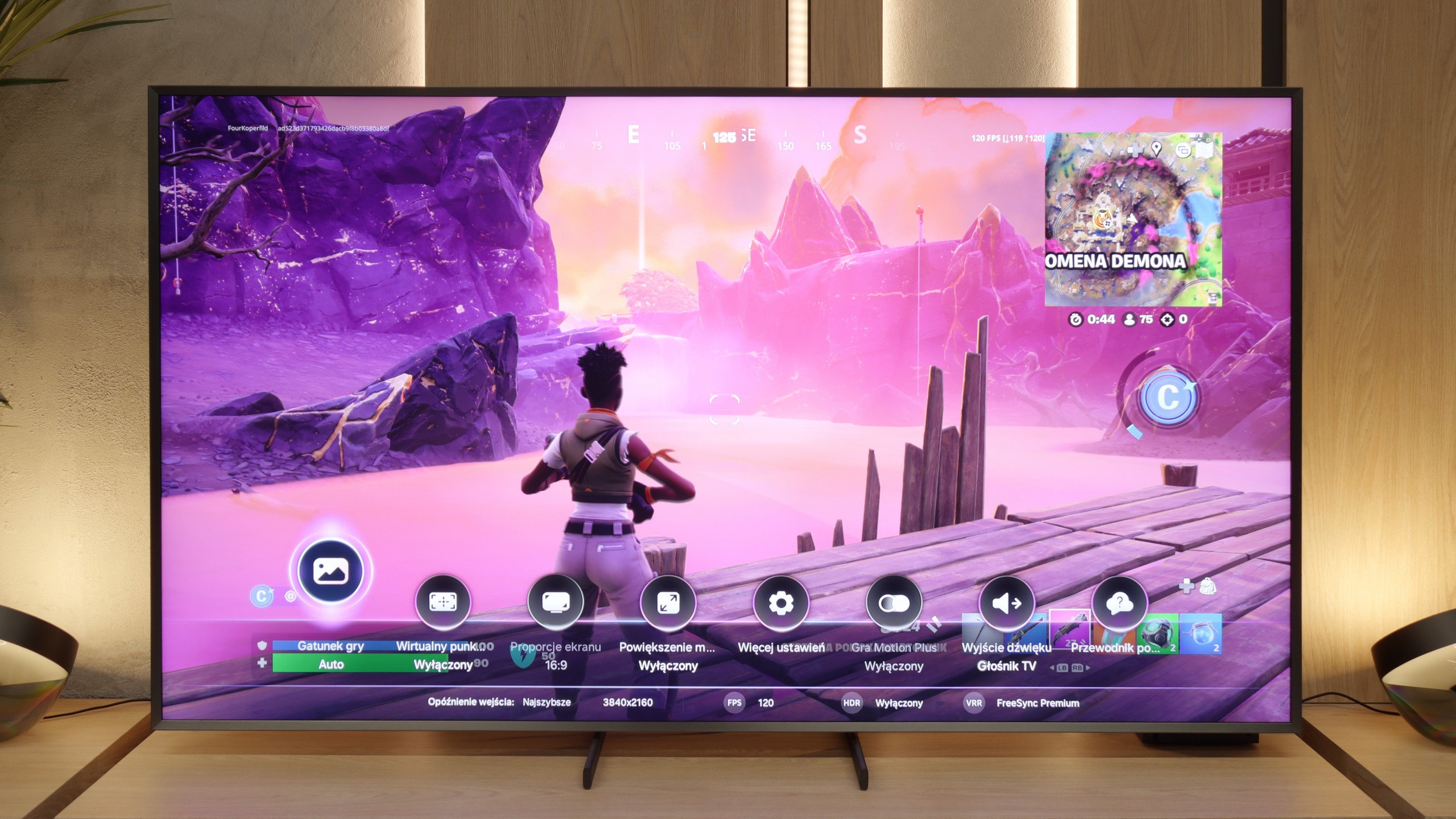

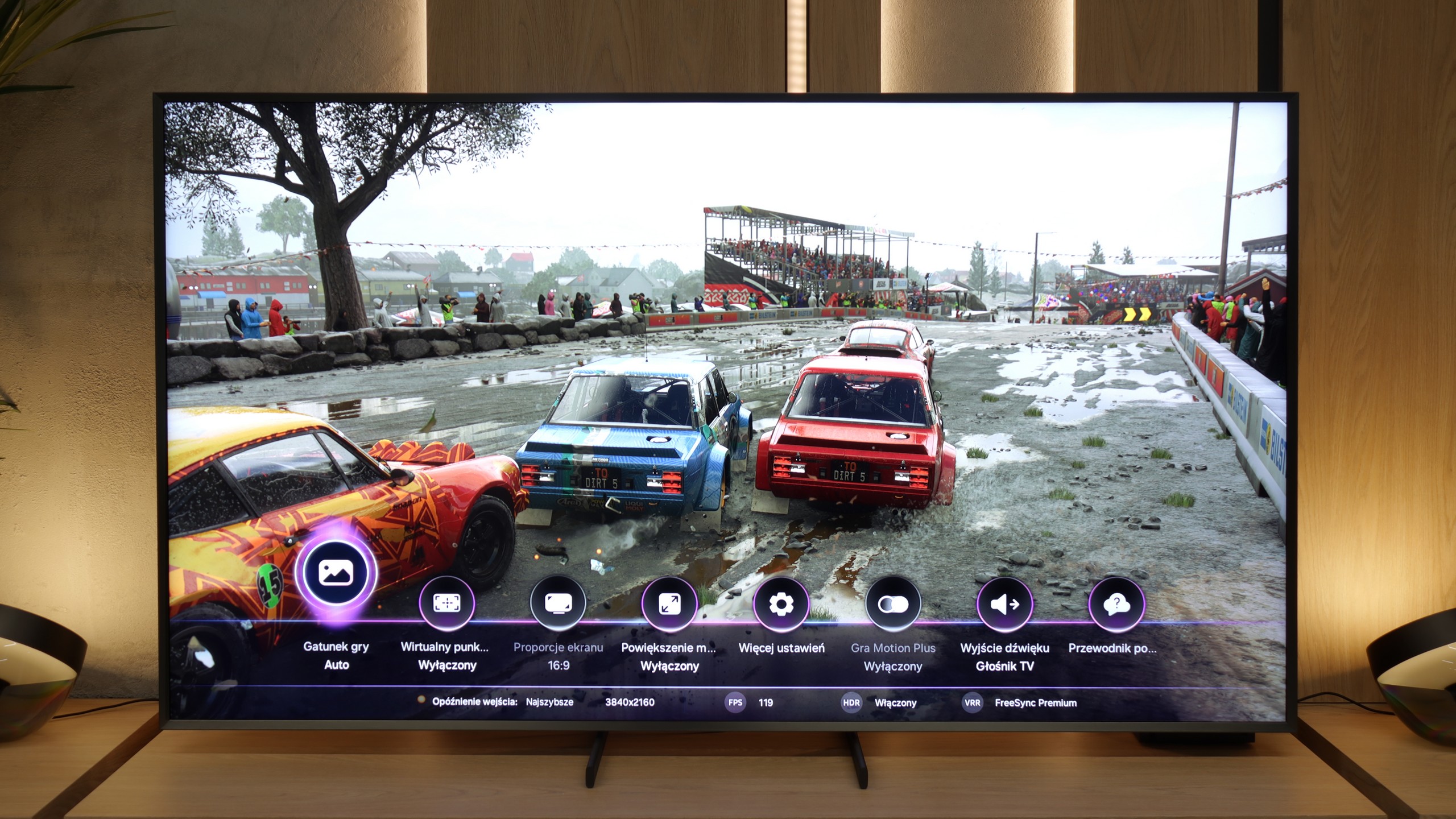
Samsung QN900D is a television that offers excellent compatibility with consoles and a range of features that gamers will appreciate. It has 4 HDMI 2.1 ports, although unfortunately without the full bandwidth of 48 Gb/s. Nevertheless, for the average user, this is more than sufficient. Additionally, the television supports Auto Low Latency Mode (ALLM) and Variable Refresh Rate (VRR), which means a smoother image and no screen tearing during dynamic gameplay. The G-Sync and FreeSync technologies also deserve attention, as they ensure optimal cooperation with consoles and computers equipped with the appropriate graphics cards, minimizing stuttering and providing a smooth image.
One of the unique features available only in Samsung televisions is the Xbox Game Pass app, which allows for game streaming without the need for a console. This is a very convenient solution that lets you enjoy your favourite games without the need to purchase additional hardware. Furthermore, the QN900D has a Game Bar – a special panel that enables quick access to game-related settings, making the configuration of game mode fast and intuitive.
Another interesting feature is a function called Auto Motion Plus Game, which is a special motion smoothing mode that can increase the frame rate (operating at a maximum for a 4K@60Hz signal). Importantly, this does not cause a significant increase in input lag, allowing the player to enjoy both greater image smoothness. All these features make the Samsung QN900D an excellent choice for those looking for a gaming television with the highest possible specifications.
It really is nice here. The QN900F offers a full set of features that we would expect from a top-end gaming television – we have VRR, ALLM, Game Bar, and also cloud gaming applications. However, the biggest standout is the proprietary motion smoother, which also works in games and – importantly – does not introduce noticeable lag. This is something we won't find with its other competitors.
Unfortunately, there is also something concerning. This year, Samsung has evidently messed something up with its televisions. During the testing of the QN900F before its update, it had the HGIG feature, which allowed for perfect adjustment of HDR settings for the console. However, according to our procedures, we always update the equipment to the latest version – in order to give the manufacturer a chance to fix any shortcomings. And here… it turned out the opposite.
After the update, the HGIG feature disappeared from the menu, making the correct configuration of the console for HDR practically impossible. It was supposed to be complete – 165Hz, four HDMI 2.1 ports, a full gaming package… but unfortunately, it turned out to be a small blunder. What a shame.
Input lag
9.8/10
9.8/10
SDR
HDR
Dolby Vision
When it comes to signal delay (input lag), Samsung QN900D achieves impressive results. Values below 15 ms are truly excellent, making the television an ideal choice for gamers expecting minimal delays during gameplay. The input lag at 8K resolution is also noteworthy, measuring just 17 ms – this is also a very good result that allows enjoyment of dynamic games at the highest possible resolution without noticeable delays.
In terms of input lag, the QN900F presents a class of its own. Regardless of the set resolution or refresh rate, the response time remains instantaneous. It's one of those televisions where it's genuinely difficult to perceive any delay. Gamers can rely on complete responsiveness and the assurance that every action from the controller will be immediately mirrored on the screen. In this category, it is simply the highest tier.
Compatibility with PC
8/10
8.4/10


Samsung QN900D offers very good compatibility with computers, making it an excellent choice for users looking for a large screen for work and entertainment. It supports full colour reproduction with Chroma 4:4:4, resulting in better image quality when using text and office applications. The readability of fonts is quite good, especially considering the 8K resolution, which offers an enormous level of detail.
Unfortunately, despite the very high resolution, the television has some issues with bright fonts on a dark background – slight shadows created by subpixels can be noticed. This may not be a key issue, but for more demanding users, it could affect the comfort of use, particularly when working in text applications. Nevertheless, the overall image quality and compatibility with computers are at a high level. It is also worth praising the television for supporting 240Hz at lower resolutions like 4K. This allows high-end PCs to showcase their prowess in gaming.
QN900F is an 8K television, so even in a larger size, it can be treated as a legitimate work monitor – of course, provided that someone can actually fit such a colossus on their desk. The device supports 4:4:4 chroma, so overall font readability is good, though we noticed some issues with the thinnest lines. This may stem from the fact that at a native 8K resolution, some texts are simply so microscopic that the television is not necessarily ideally suited for it. It sounds a bit absurd, but how else can we explain it? 😉
On the other hand, the QN900F can be a great choice for PC gamers. It supports G-Sync technology, and at a 4K resolution, it offers refresh rates of up to 165 Hz. So if you have a very powerful computer, the QN900F will allow it to spread its wings and showcase its gaming prowess in all its glory.
Viewing angles
7.8/10
5/10
The viewing angles on the QN900D television are very good, despite the use of a VA panel. Thanks to a special coating that broadens the viewing angles, the picture remains flawless even when viewed at an angle. This is particularly important when there are more people in the room – every viewer, regardless of their seating position, can enjoy excellent picture quality, without distortion or loss of colours. This makes the Samsung QN900D a great choice for watching both films and sports broadcasts with a larger group.
The viewing angles on the QN900F are really quite good, but we have the impression that the 'Ultra Viewing Angle' coating that Samsung heavily advertises performs worse than last year. Yes – the effect is still much better than in most LCD TVs with VA panels, but it still falls short of OLEDs or good IPS panels. The image holds up decently when viewed from the side, and the colours don't fade as quickly as in standard VAs, however, we expected something more, especially since previous generations from Samsung have performed better. Perhaps the additional matte coating that has appeared in this year's 8K series is having an effect on this.
TV efficiency during daytime
5/10
7.1/10

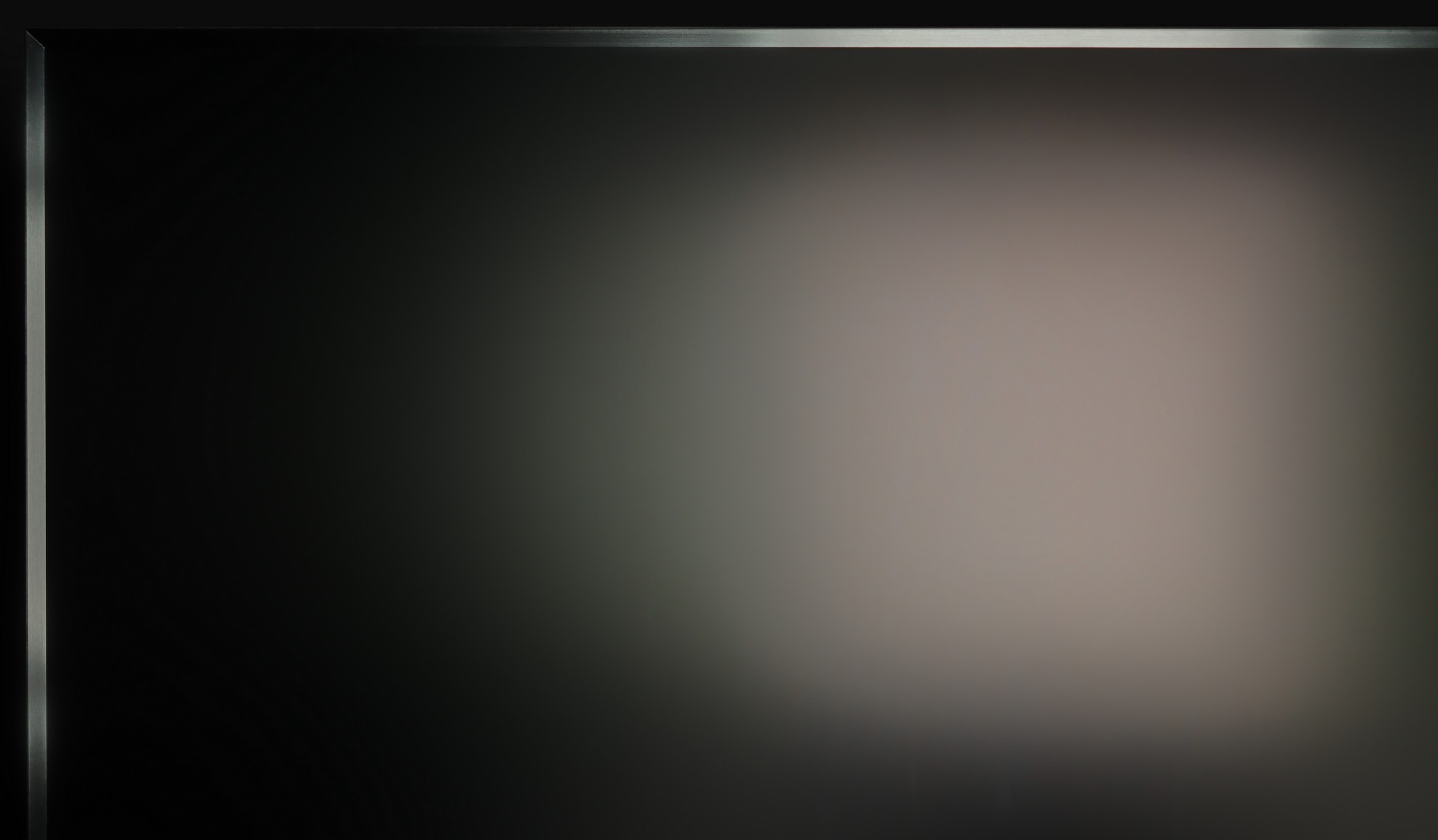

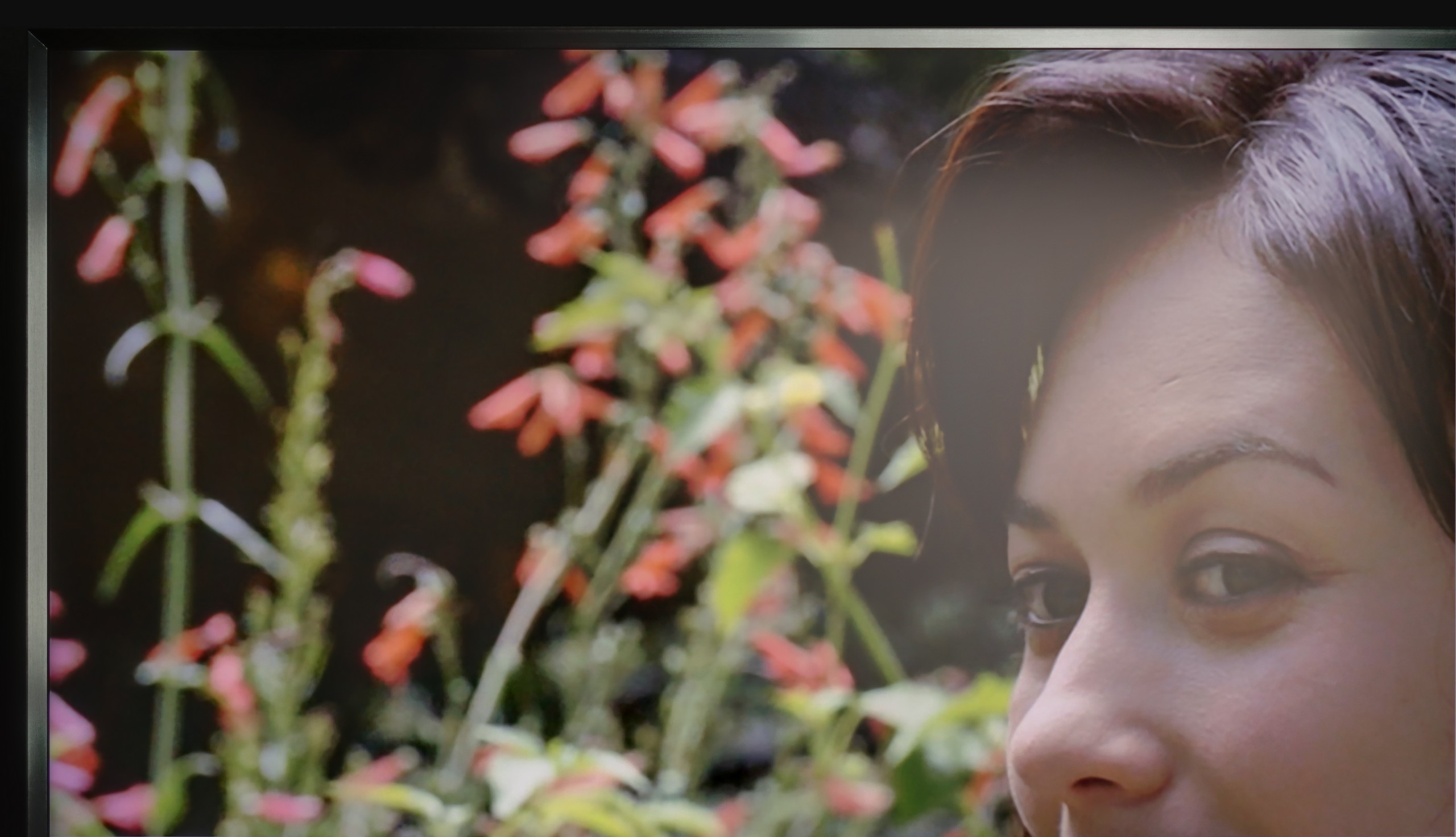
Matrix brightness
Average luminance SDR
Samsung QN900F: 723 cd/m2
Samsung QN900D Neo QLED 8K: 387 cd/m2
When it comes to the performance of the Samsung QN900D television in daylight conditions, it is generally average. The television has a special anti-reflective coating that helps reduce glare; however, due to the VA panel and the layer that widens the viewing angles, light reflections are heavily scattered horizontally - resembling the colours of a rainbow. This results in a loss of image vibrancy, especially in bright rooms where intense light sources can negatively affect the quality of the displayed image.
One of the innovations in 8K from Samsung is the matte display. This year, the Koreans have been gradually "mattifying" their televisions, and it must be said that the QN900F is at the very top of the game in this regard – reflections are suppressed better than in any other model on the market. In practice, this means that even in a brightly lit living room, the picture remains clear, and reflections nearly disappear from the screen. Of course, such a coating also comes at a cost. Colours lose some intensity, and black does not appear as deep under strong light as on shiny screens. But this is more of a detail than a real problem, as the richness of colours and depth of black are most important in the evening, with the lights turned off – and then this effect completely disappears.
Details about the matrix
Subpixel Structure:

Panel uniformity and thermal imaging:

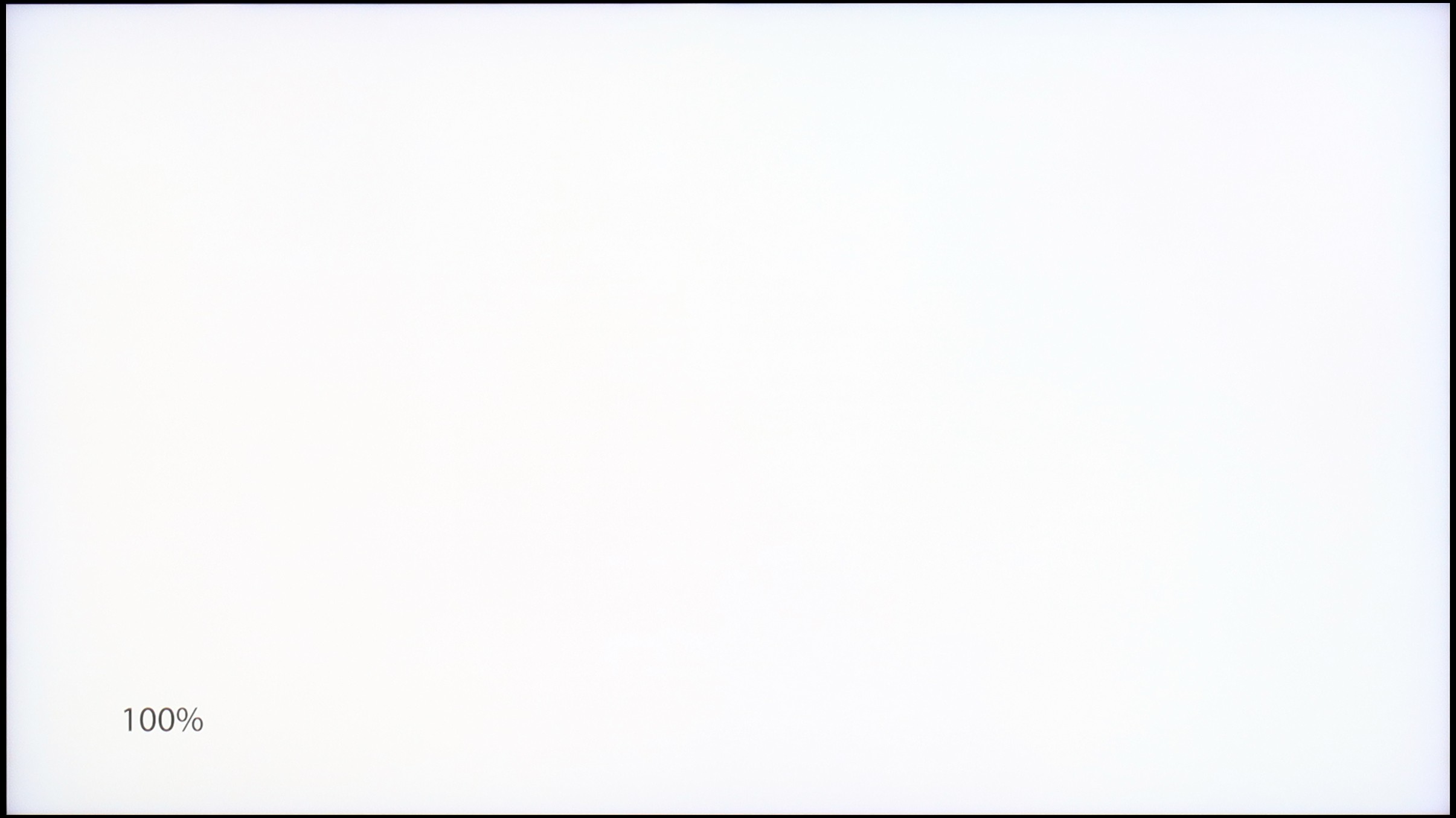
Samsung QN900D Neo QLED 8K
Samsung QN900F
TV features
7.4/10
7.2/10
- HDMI inputs0 x HDMI 2.0, 4 x HDMI 2.1 40Gbps0 x HDMI 2.0, 4 x HDMI 2.1 40Gbps
- Other inputsToslink (Optical audio), IR (remote)
- OutputsToslink (Optical audio), eARC (HDMI), ARC (HDMI)Toslink (Optical audio), eARC (HDMI), ARC (HDMI)
- Network InterfacesWi-Fi 2.4GHz, Wi-Fi 5GHz, Ethernet (LAN) 100MbpsWi-Fi 2.4GHz, Wi-Fi 5GHz, Ethernet (LAN) 100Mbps
- TV receptionDVB-T, DVB-T2, DVB-S, DVB-S2, DVB-CDVB-T, DVB-T2, DVB-S, DVB-S2, DVB-C
Classic features:
- Recording to USB (terrestrial TV)
- Recording programming
- Picture in Picture (PiP)
- RF remote control (no need to aim at the screen)
- Backlit remote control
- Teletext
- Audio only mode
- Possibility to connect Bluetooth headphones to the TV
- Possibility to simultaneously use Bluetooth headphones and the TV speaker
Smart features:
- AirPlay
- Screen mirroring (Windows Miracast)
- Wyszukiwanie głosowe
- Voice search in native language
- Ability to connect a keyboard and mouse


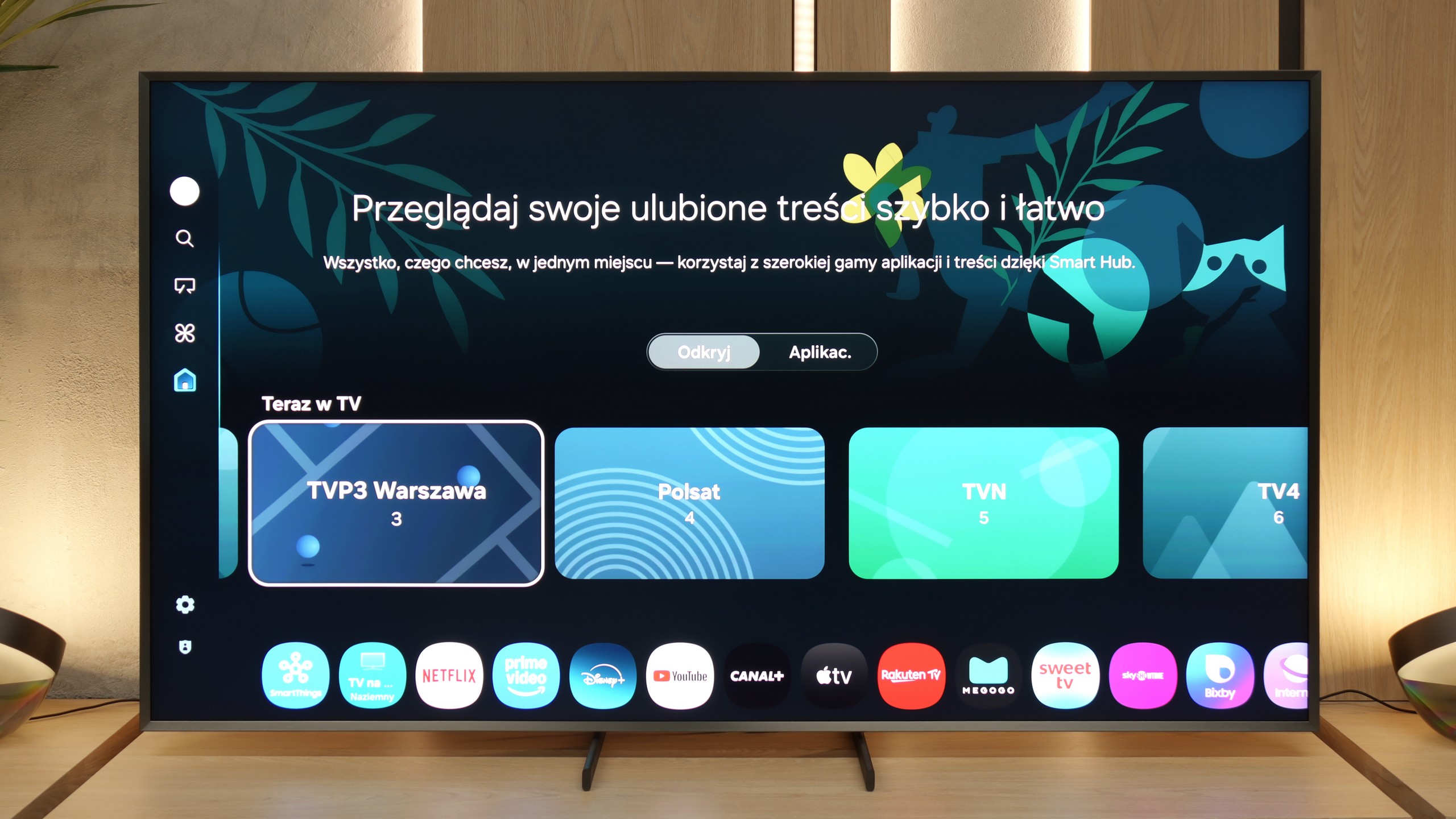
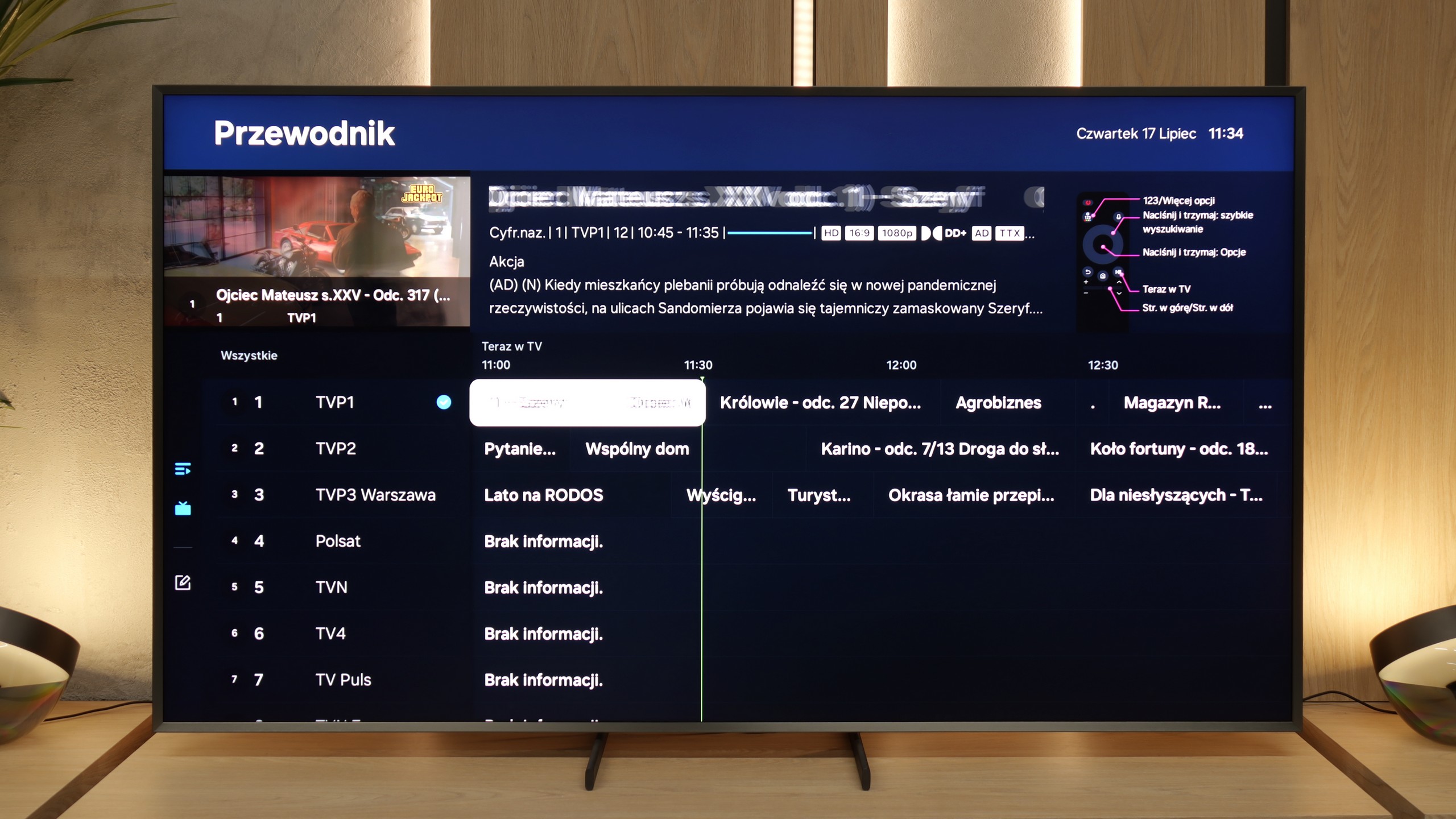
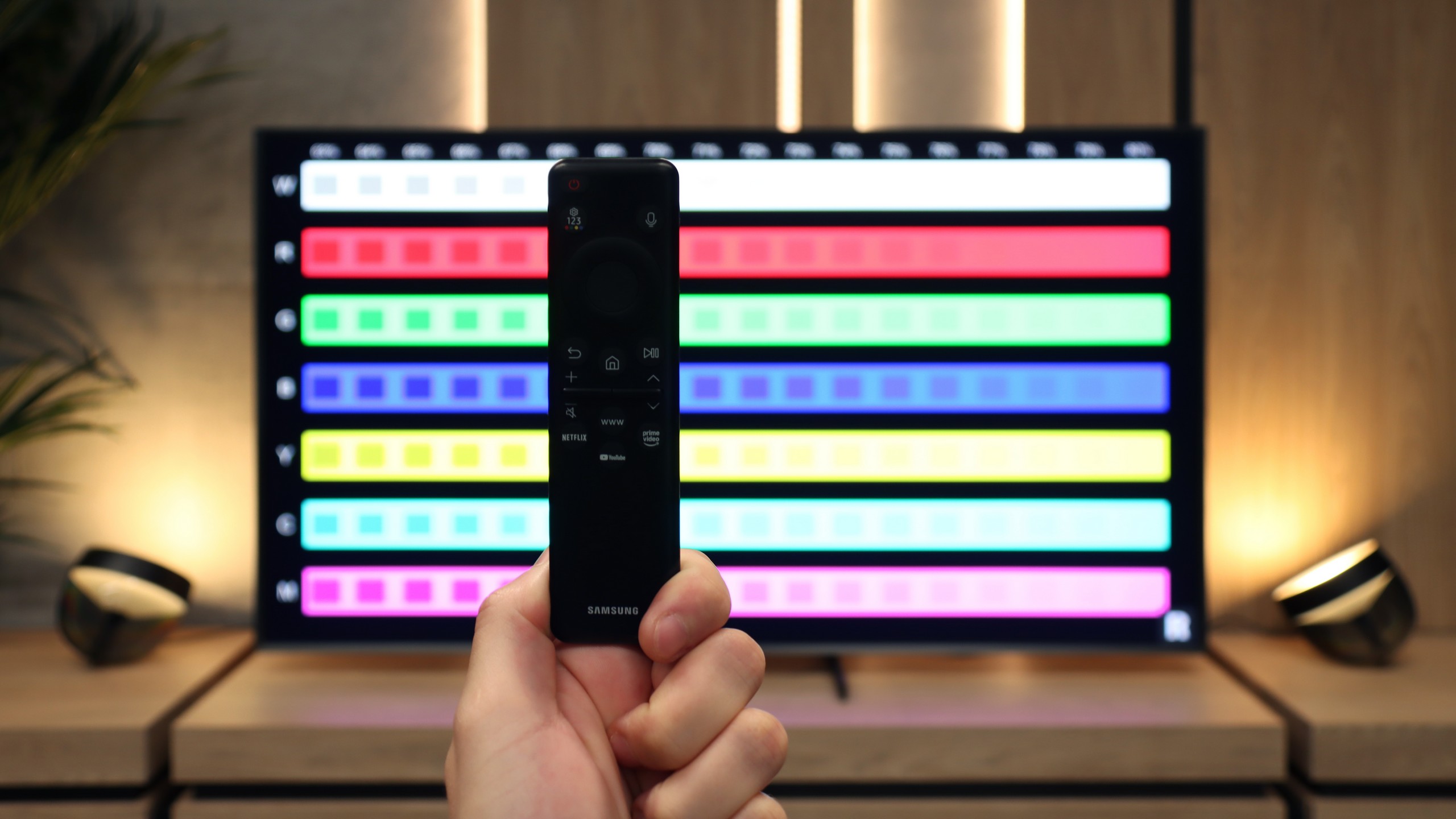
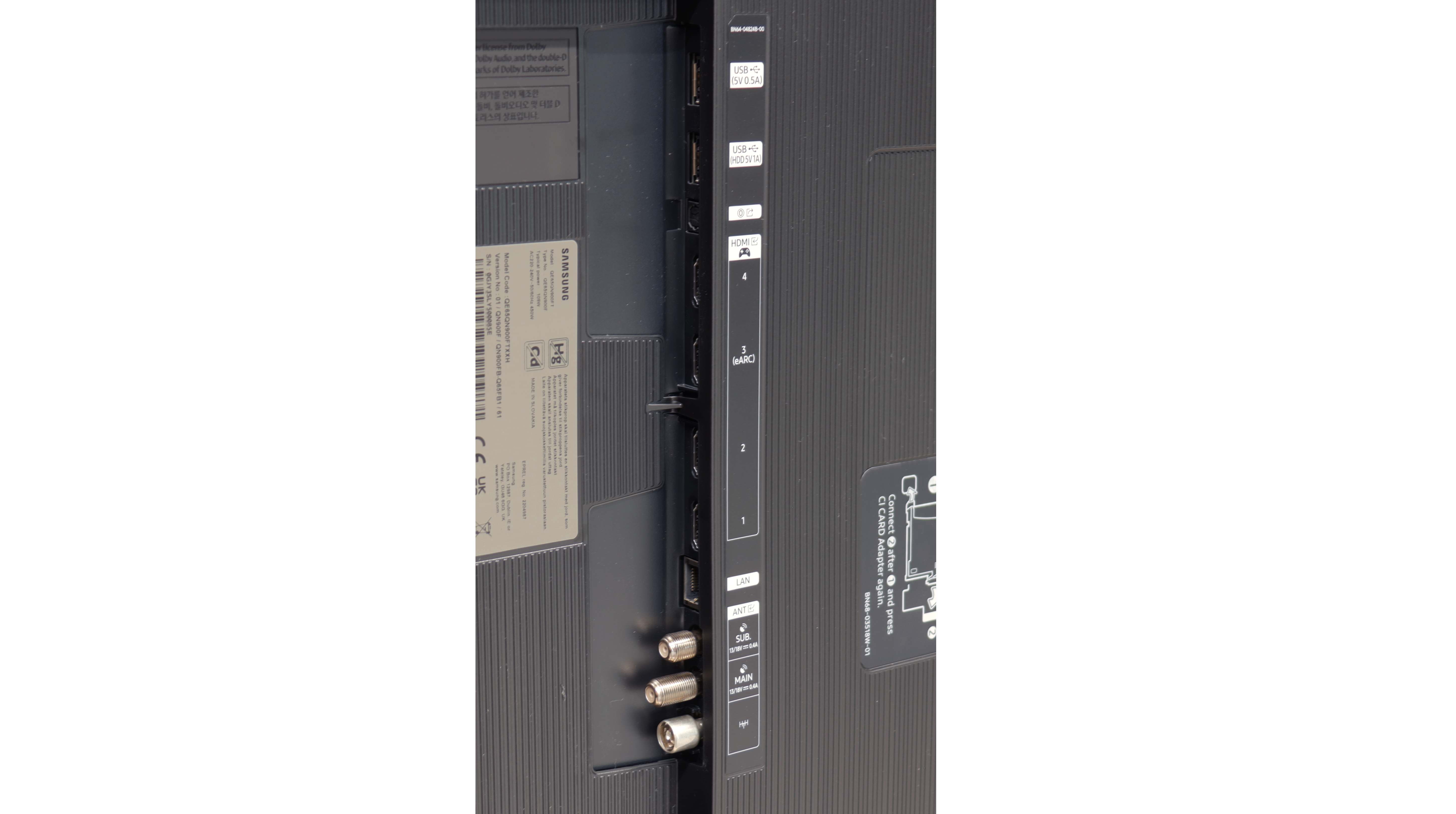
The Tizen system that powers the Samsung QN900D television offers excellent integration with other devices, allowing for convenient use of numerous applications, including AirPlay. Users also have the option to control other equipment via the SmartThings app. The television also works with lighting systems such as Philips Hue, enabling the creation of a moody atmosphere during film screenings.
In everyday use, the QN900D performs exceptionally well. The solar remote can control other devices, such as set-top boxes, making the lack of recording functionality less of an issue. Additionally, the television features a Picture-in-Picture (PiP) function, and with its 8K resolution, it is even possible to split the screen into four parts, making it exceptionally functional and useful for watching multiple programmes simultaneously as well as for effective work with various image sources.
The Samsung QN900D also stands out with its modern appearance. Its slim profile makes it the thinnest Mini LED television on the market, and the use of the One Connect module allows for neat cable management, so the area around the television looks tidy and elegant. The central stand adds lightness and creates the impression that the television is floating in the air, giving it a unique character. Additionally, the Ambient Mode feature allows for the display of decorative graphics or the adjustment of the image to fit the interior, making the television an integral part of the room, even when it is switched off.
Television Features
QN900F really has a lot to offer. In addition to standard connections and tuners, it also boasts many typical television features. There is teletext, a clear EPG, and even a PiP function, which is rare these days. The QN900F easily supports other devices using the solar remote included in the package, which somewhat compensates for the lack of recording from the built-in antenna tuners.
Smart TV
When it comes to smart features, Samsung, as always, provides plenty – there is a vast number of applications (though not all), and the Tizen on the QN900F ran very smoothly. It is also hard to find a better television for connecting external devices – AirPlay, Miracast, Chromecast – everything works flawlessly. A curiosity is the Art Gallery mode, which - similar to The Frame - allows you to display artworks on the turned-off screen. Thanks to its relatively thick, robust frame, the effect is quite impressive – on the wall, it looks like a digital painting and can certainly make an impression on someone. Therefore, the QN900F can be whimsically dubbed The Frame Super Extra Pro 😉
Playing files from USB
9.2/10
9.1/10
Supported photo formats:
Maximum photo resolution:

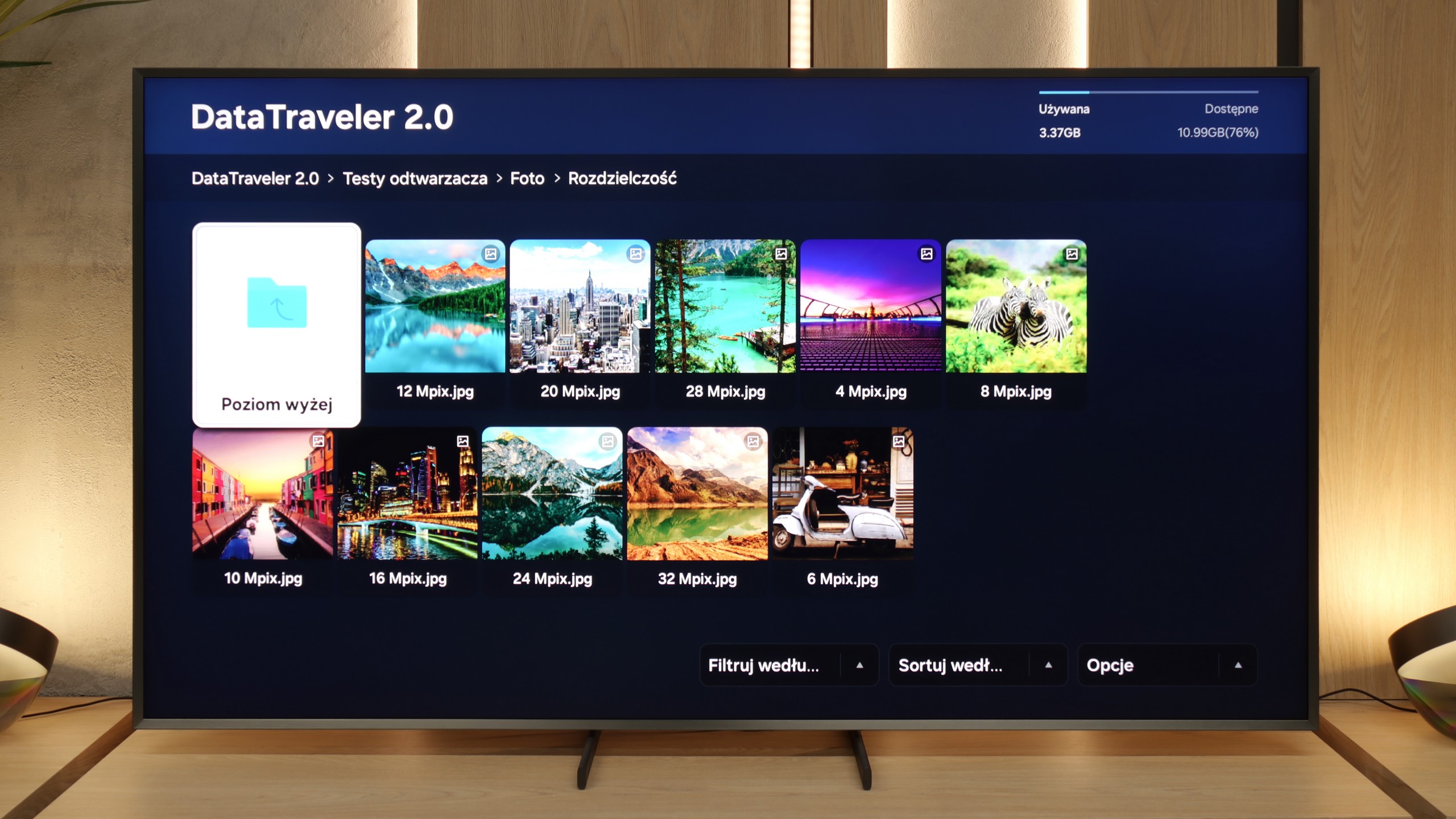
QN900D Samsung plays most popular video and audio formats without any issues. The resolution of images is also not a challenge for it; however, the television has difficulty opening less common image formats, including Apple's HEIC format.
The built-in media player in the QN900F works really well. During testing, we did not notice any major problems with handling various audio and video formats – you can verify this yourself in our file listing. The only puzzling issue arose with subtitles – only those saved in .txt format worked for us, despite Samsung's information that the television should support significantly more extensions. What could be the reason for this? It's hard to say. It is possible that this is just a temporary bug that will be fixed in one of the upcoming updates.
Apps
8.7/10
8.7/10














































Sound
7.4/10
8.2/10
- Maximum volume--
- Dolby Digital Plus 7.1
- Dolby True HD 7.1
- Dolby Atmos in Dolby Digital Plus (JOC)
- Dolby Atmos in Dolby True HD
- DTS:X in DTS-HD MA
- DTS-HD Master Audio
Television Samsung QN900D, equipped with an audio system with a power of 90 W in a 6.2.4 channel configuration. Despite its slim casing, the sound is clear and spacious, which is further supported by Dolby Atmos technology, providing immersive audio experiences. Unfortunately, like many other Samsung televisions, the QN900D does not support audio tracks in DTS format, which may be significant for home cinema users.
The QN900F performs really well – as befits a premium television. The bass is quite strong, but slightly muted. We wouldn't compare it to top audio systems, but for built-in speakers, it does the job. The high tones are also a plus – quite clear and distinct, which is particularly useful when watching films with a lot of dialogue. Unfortunately, Samsung still does not support the DTS:X format in its televisions. This means that if we want to hear sound recorded in this standard, we need to connect an external home cinema through an amplifier – the television simply won't play it on its own.


